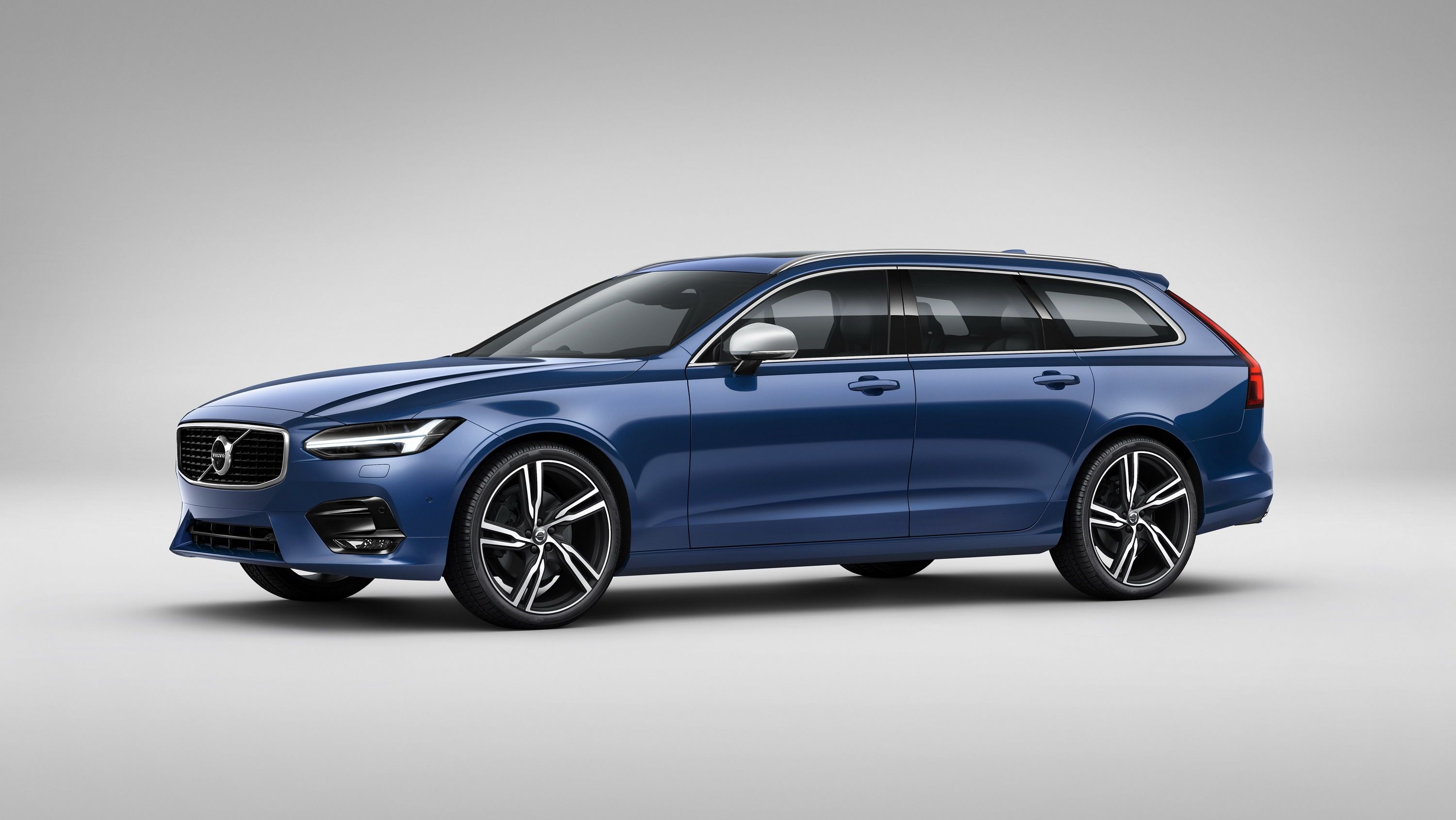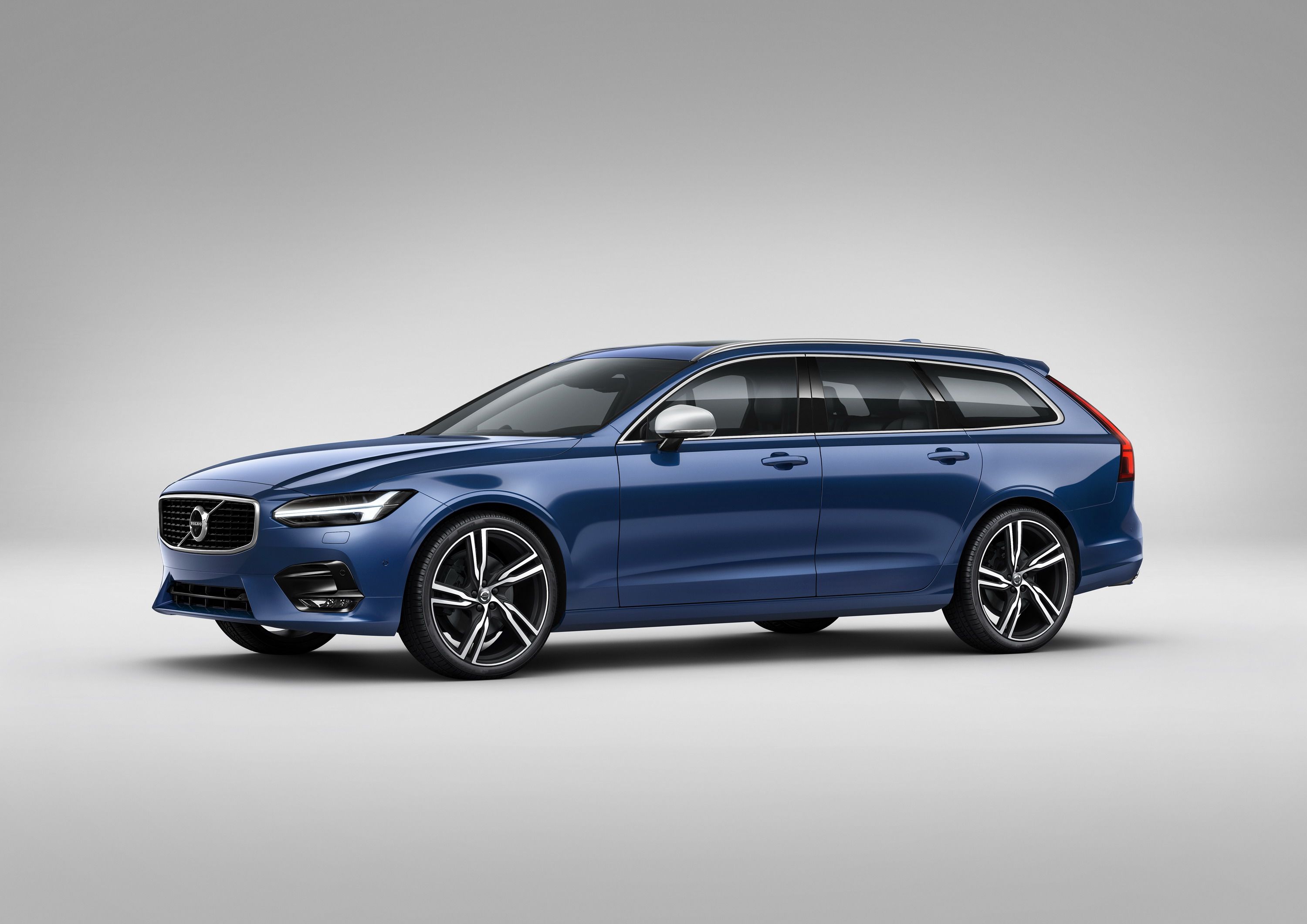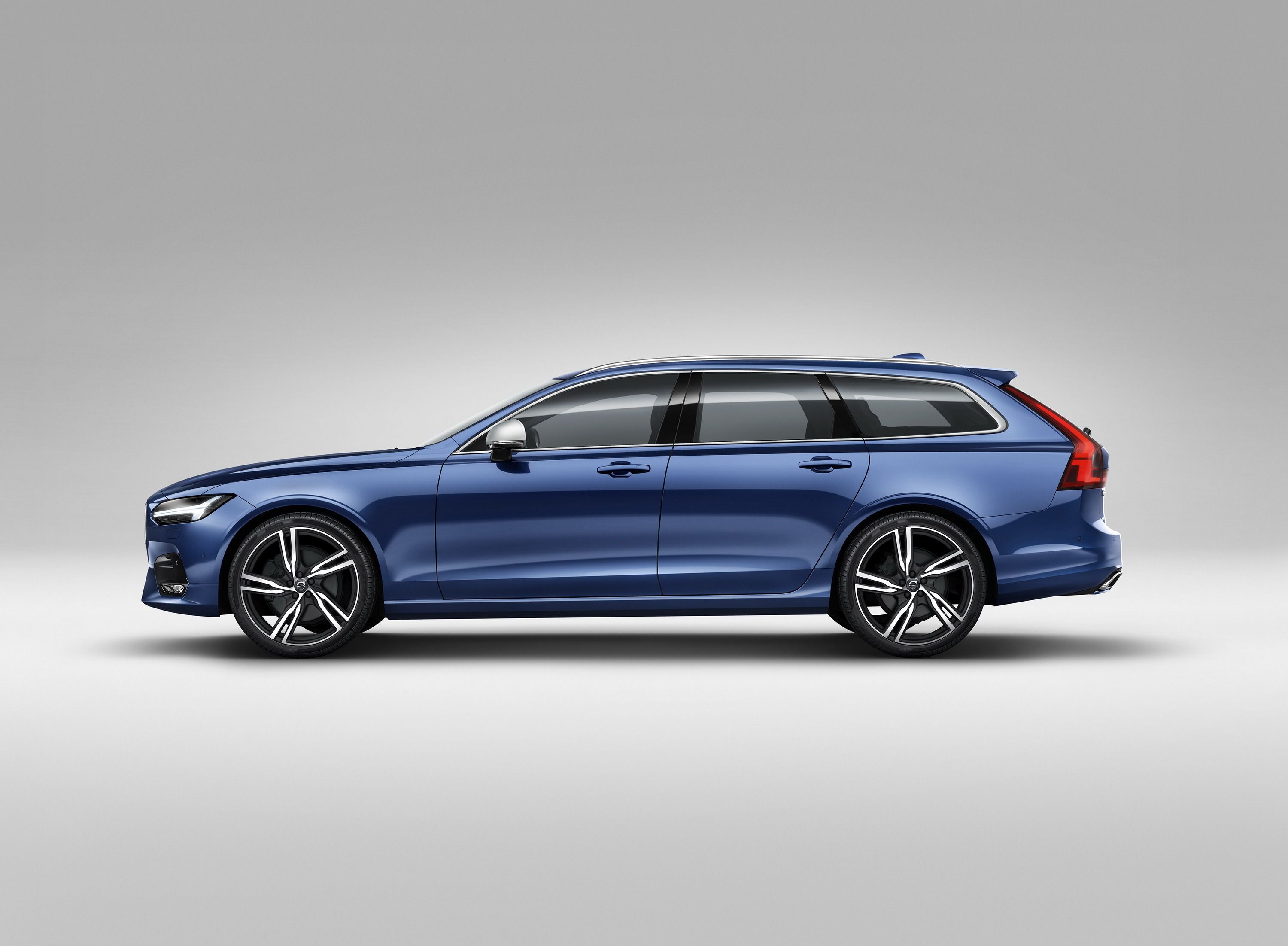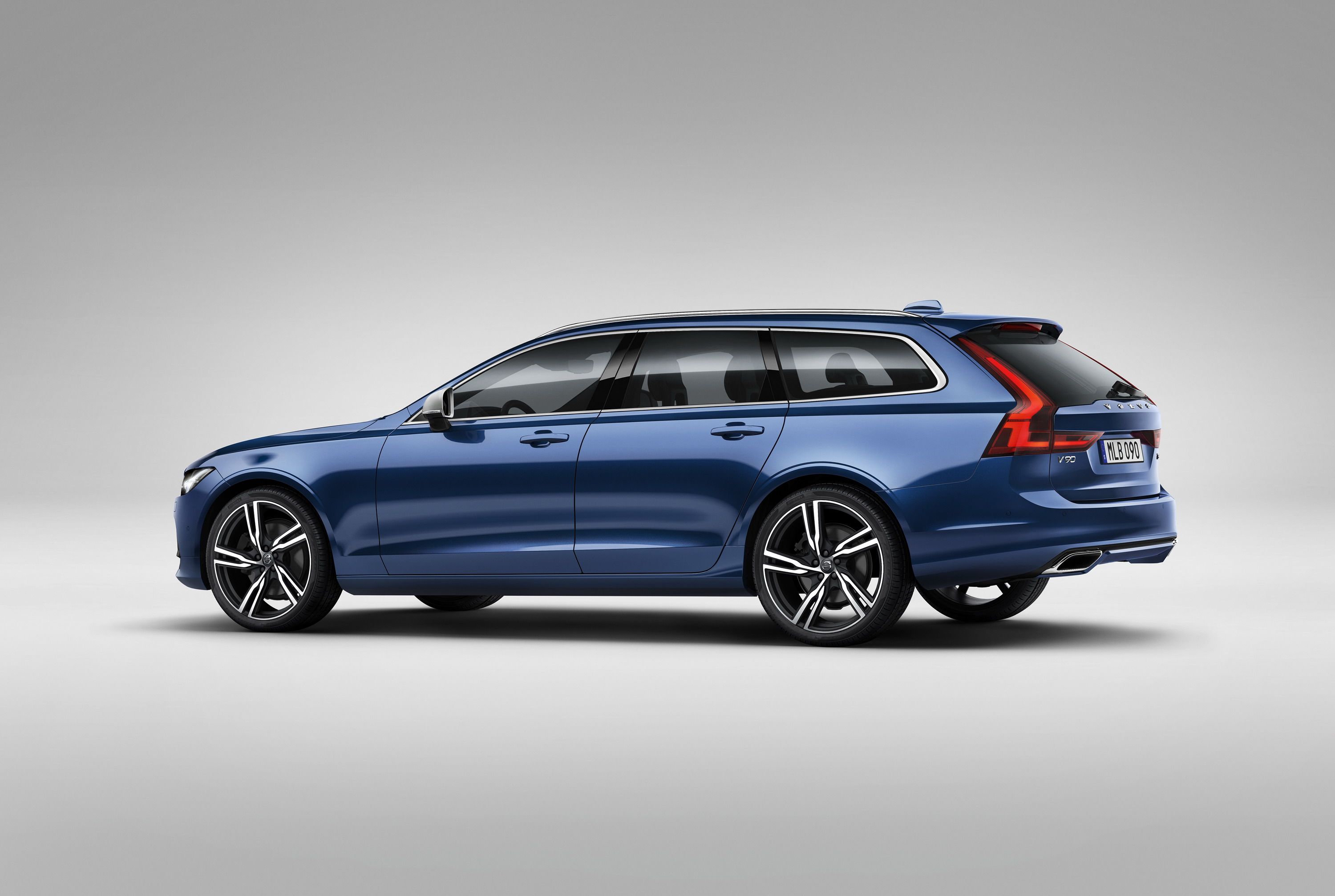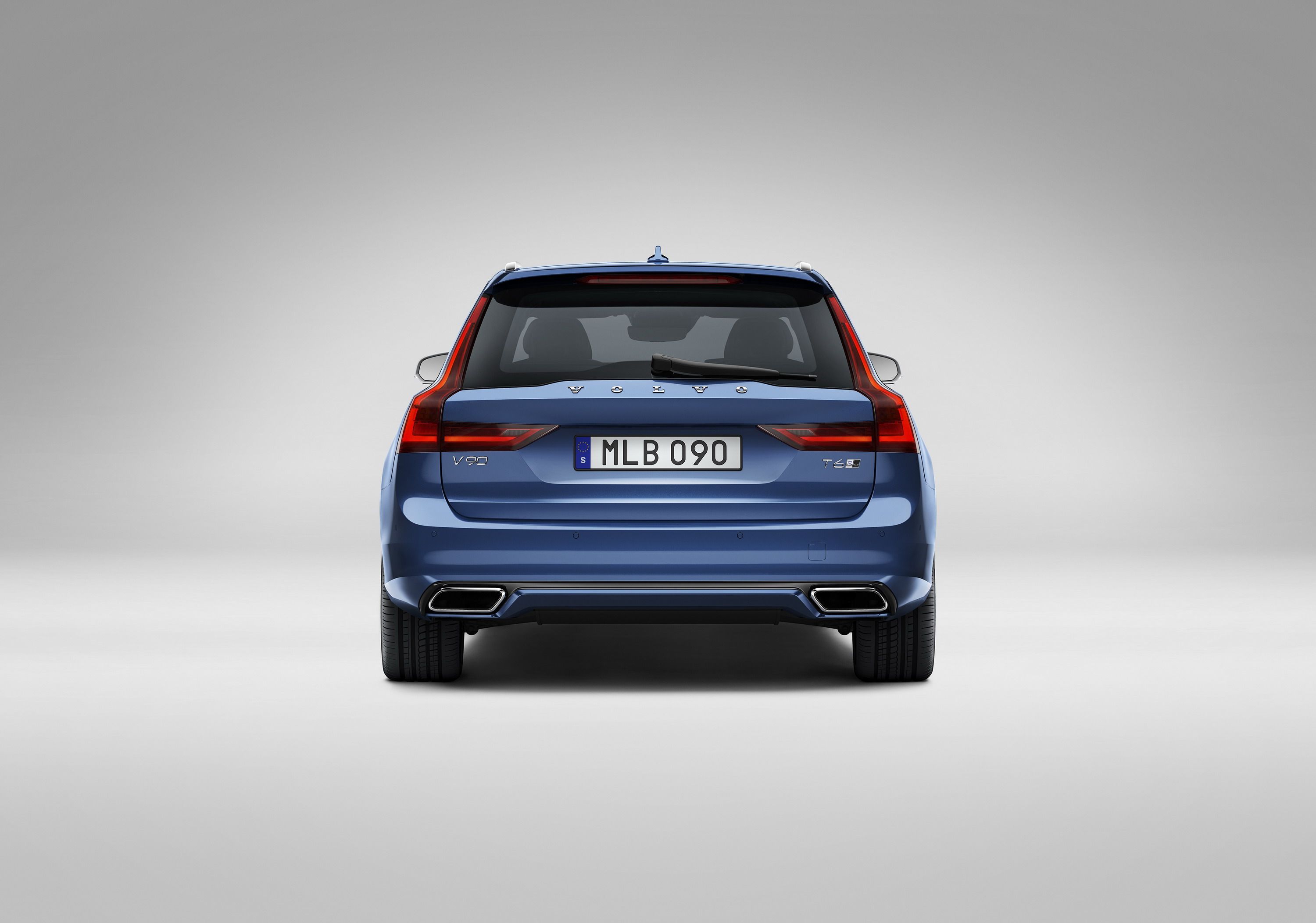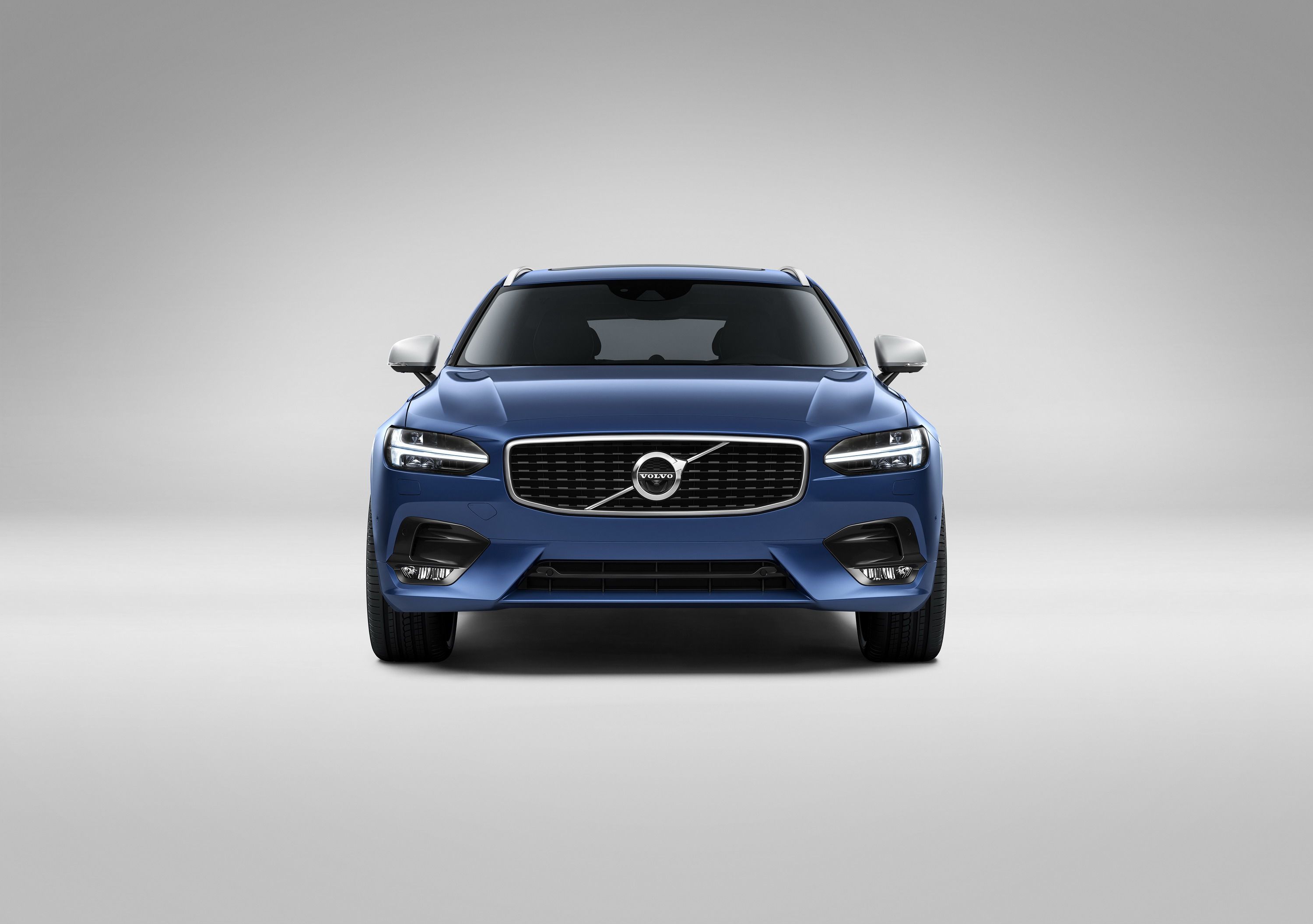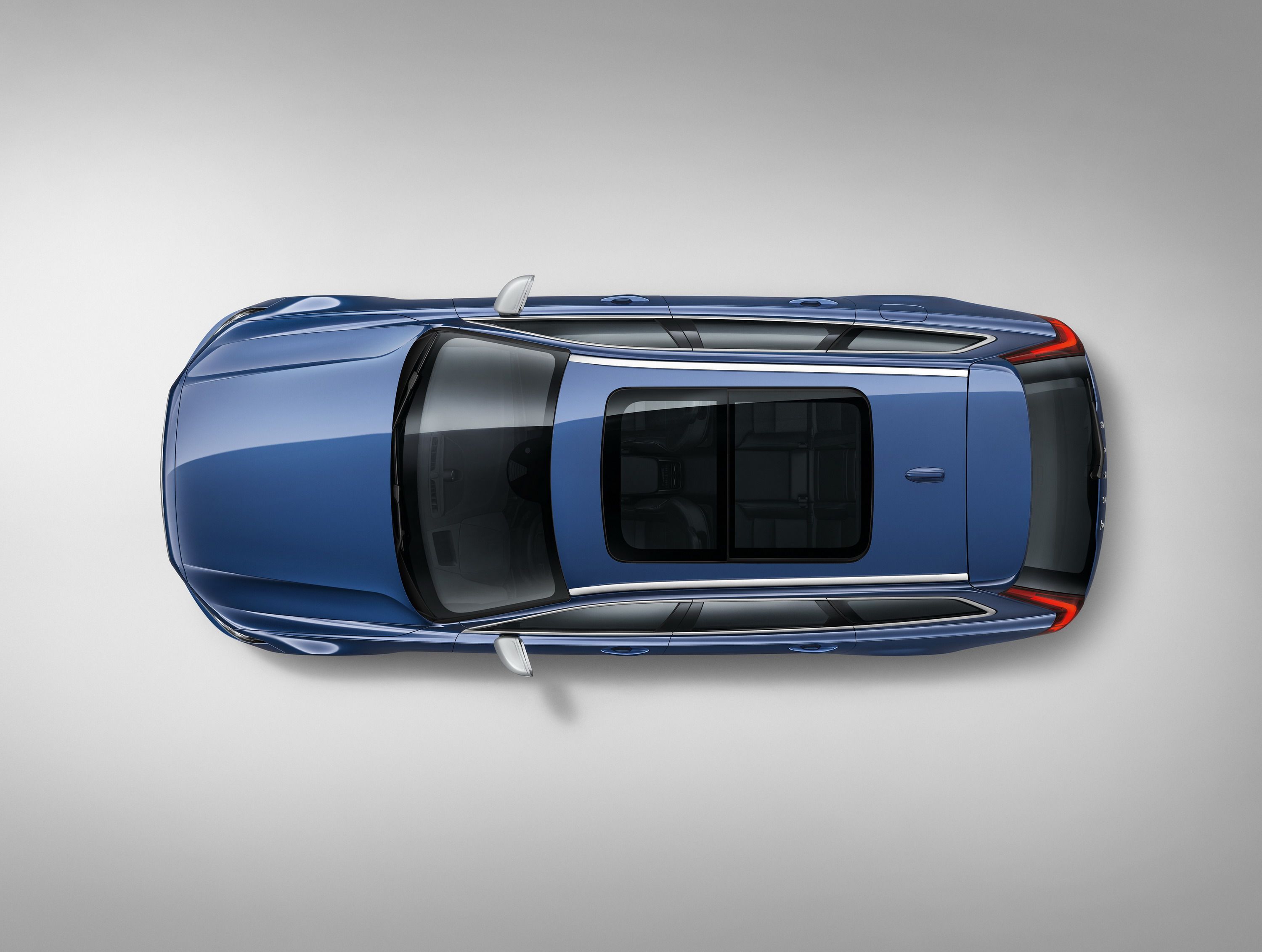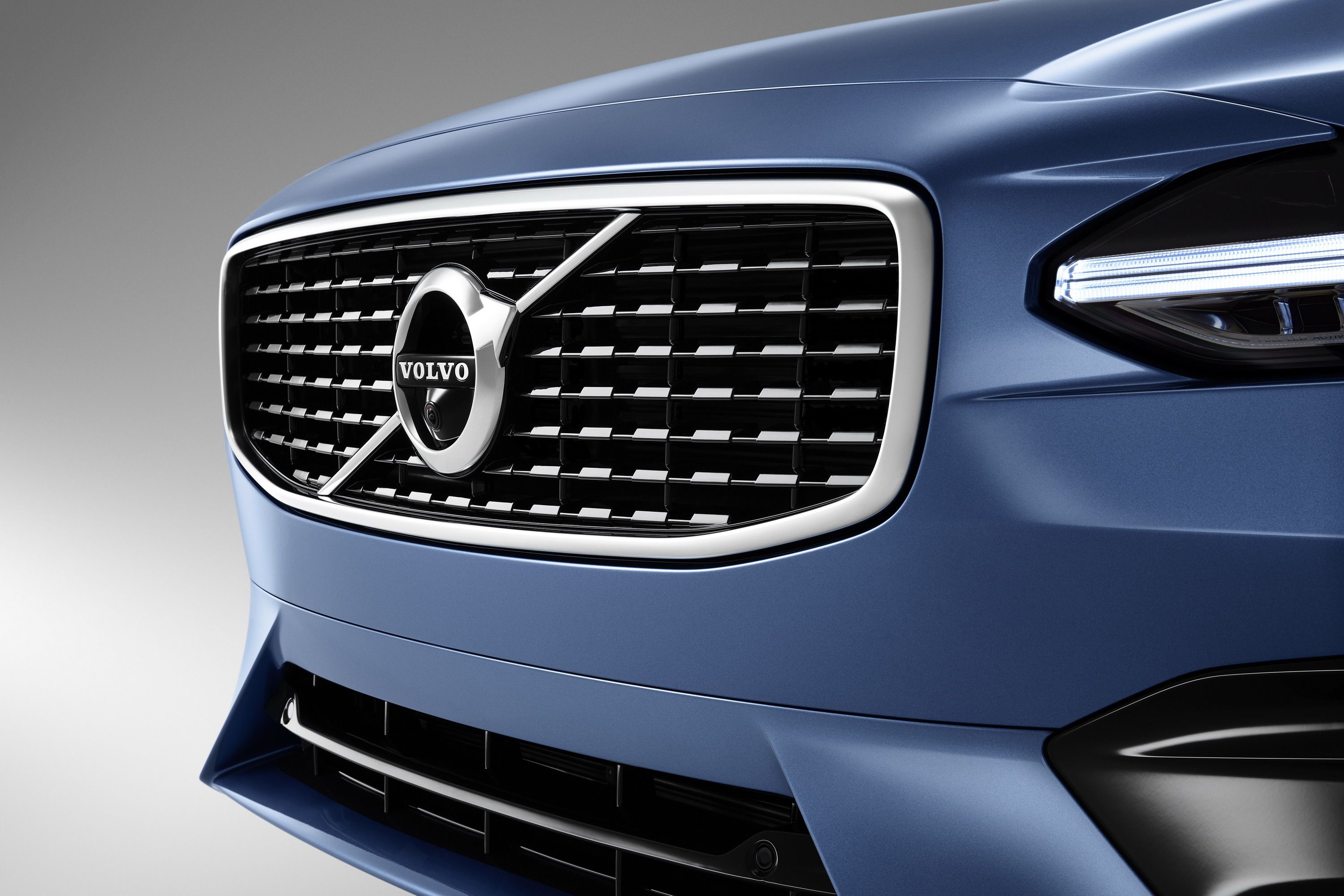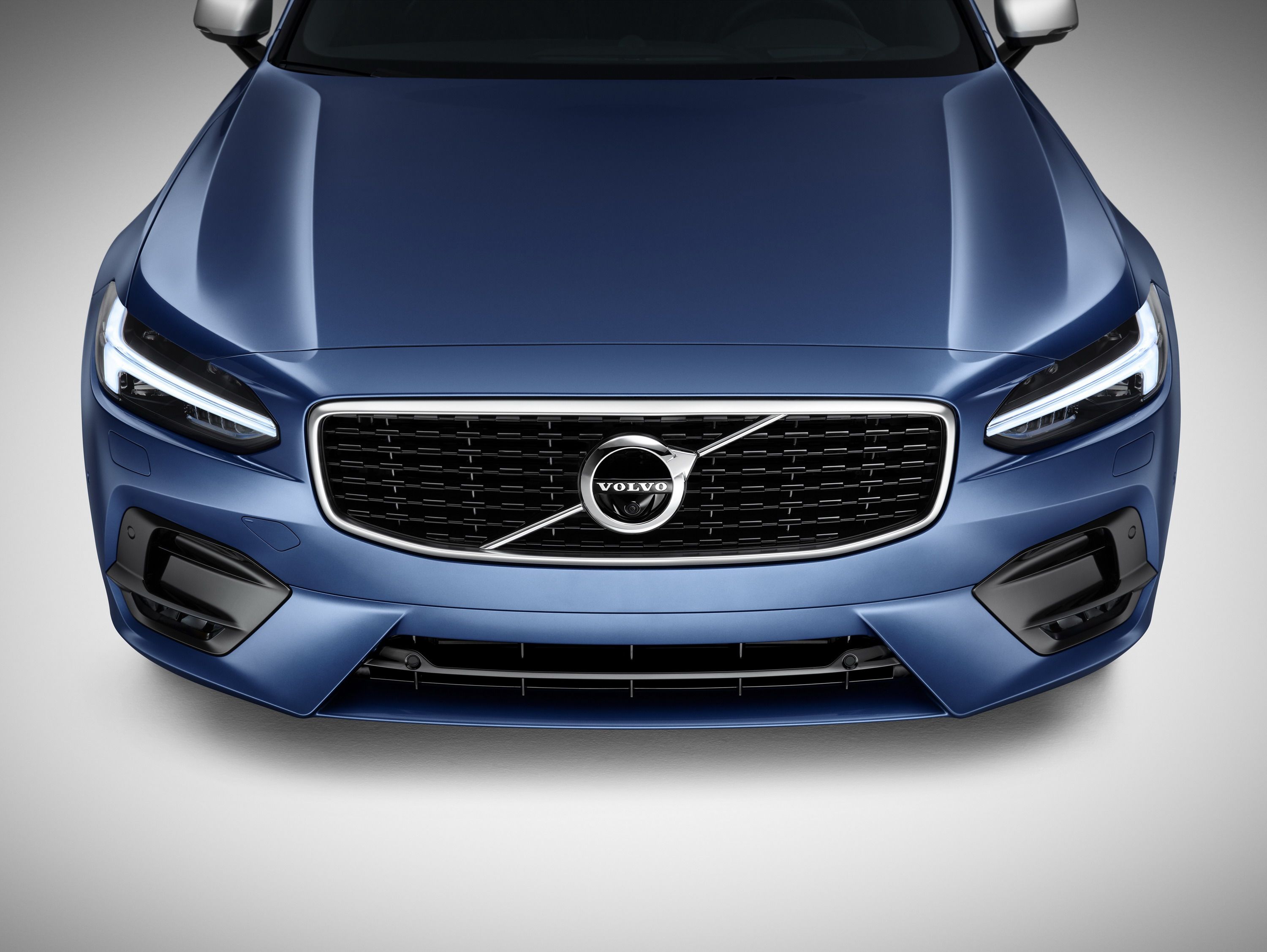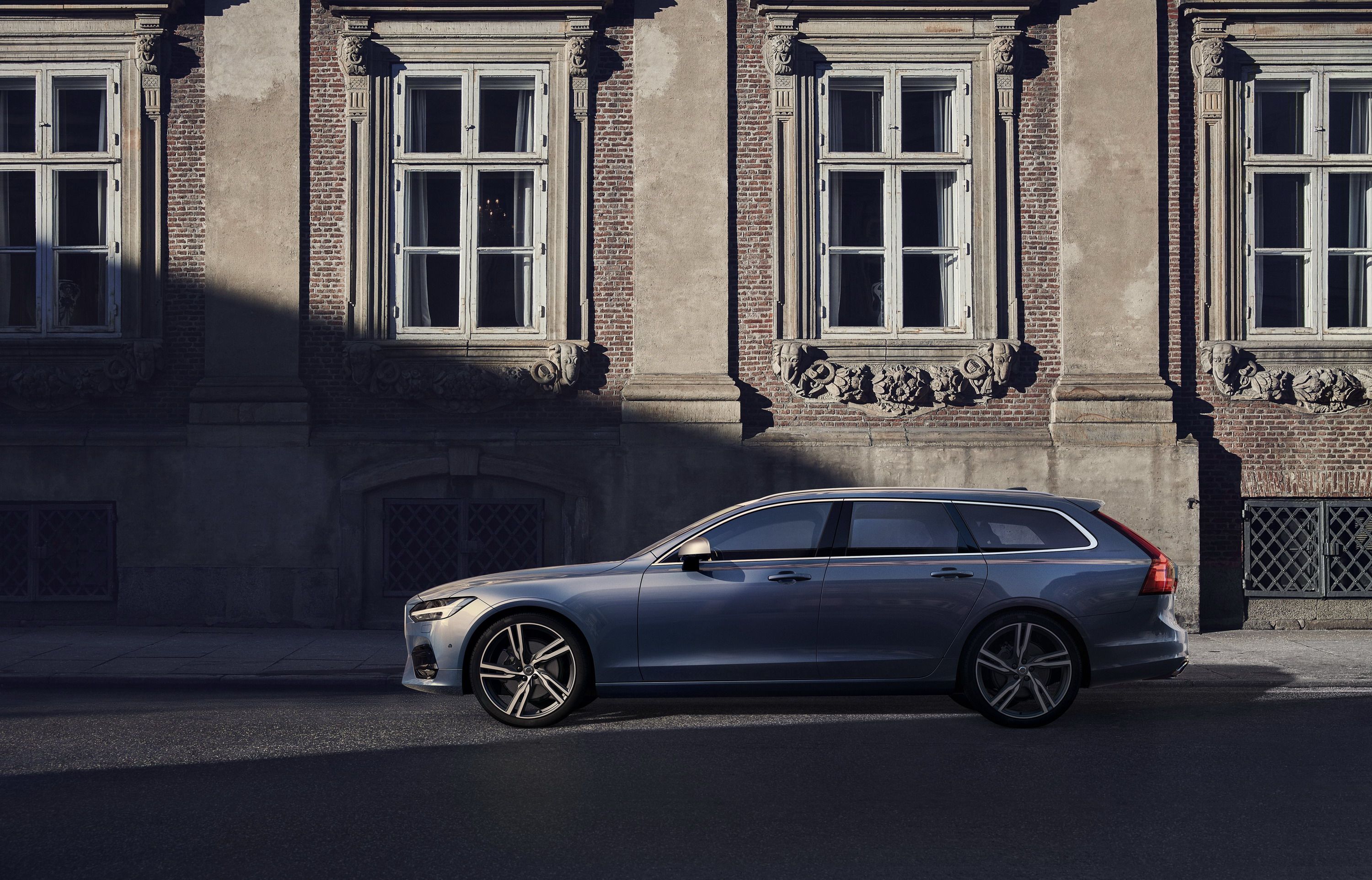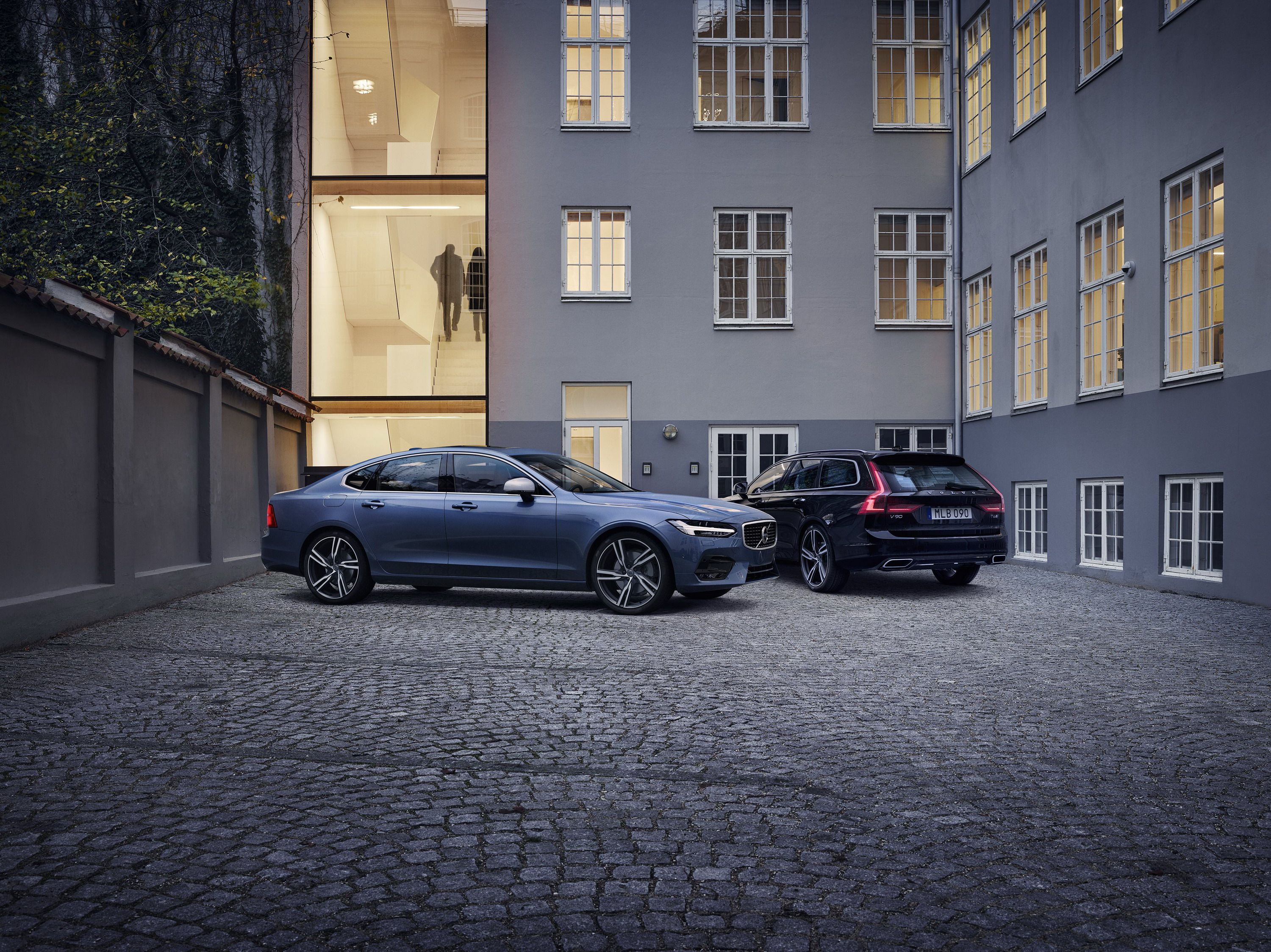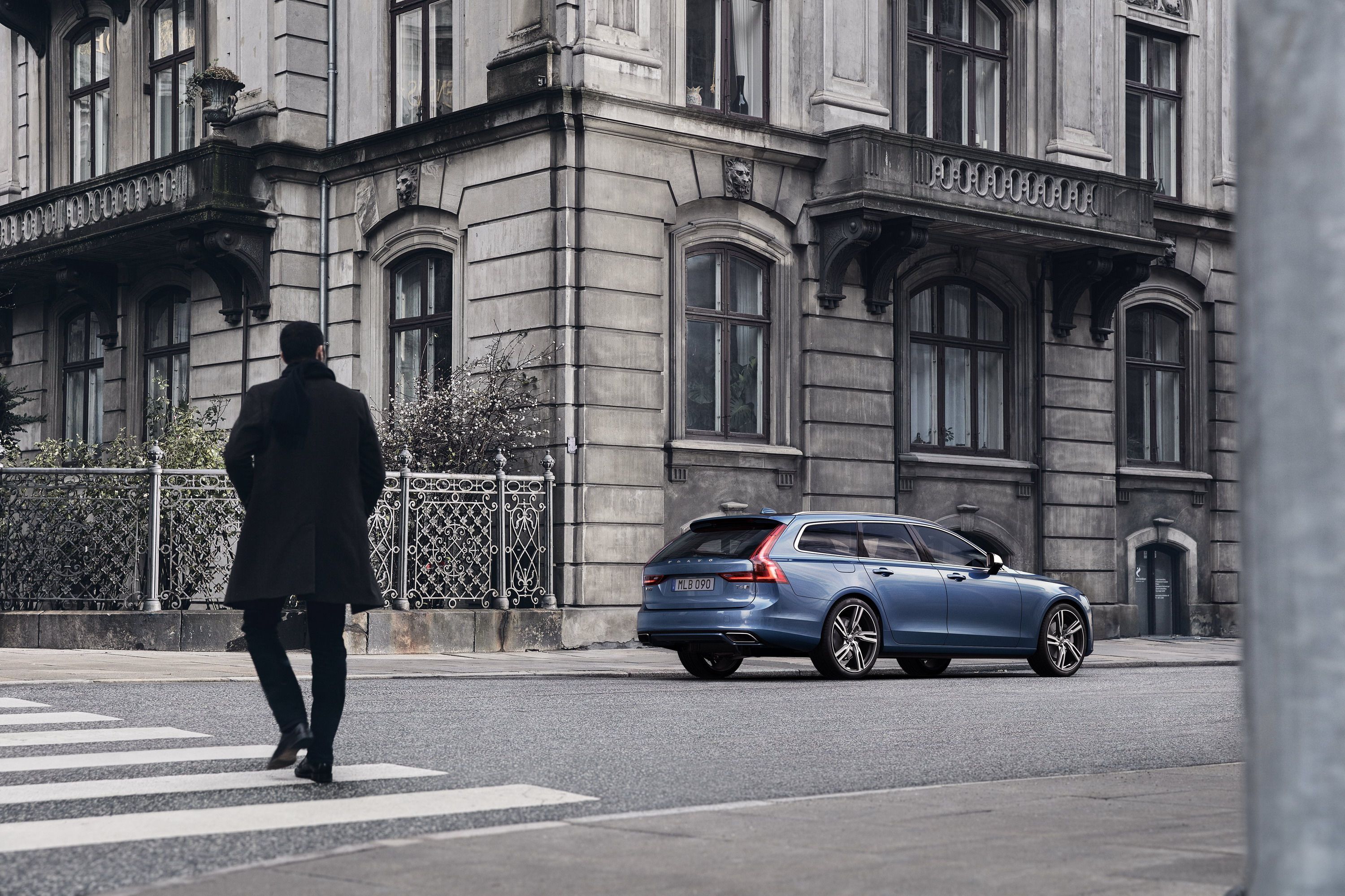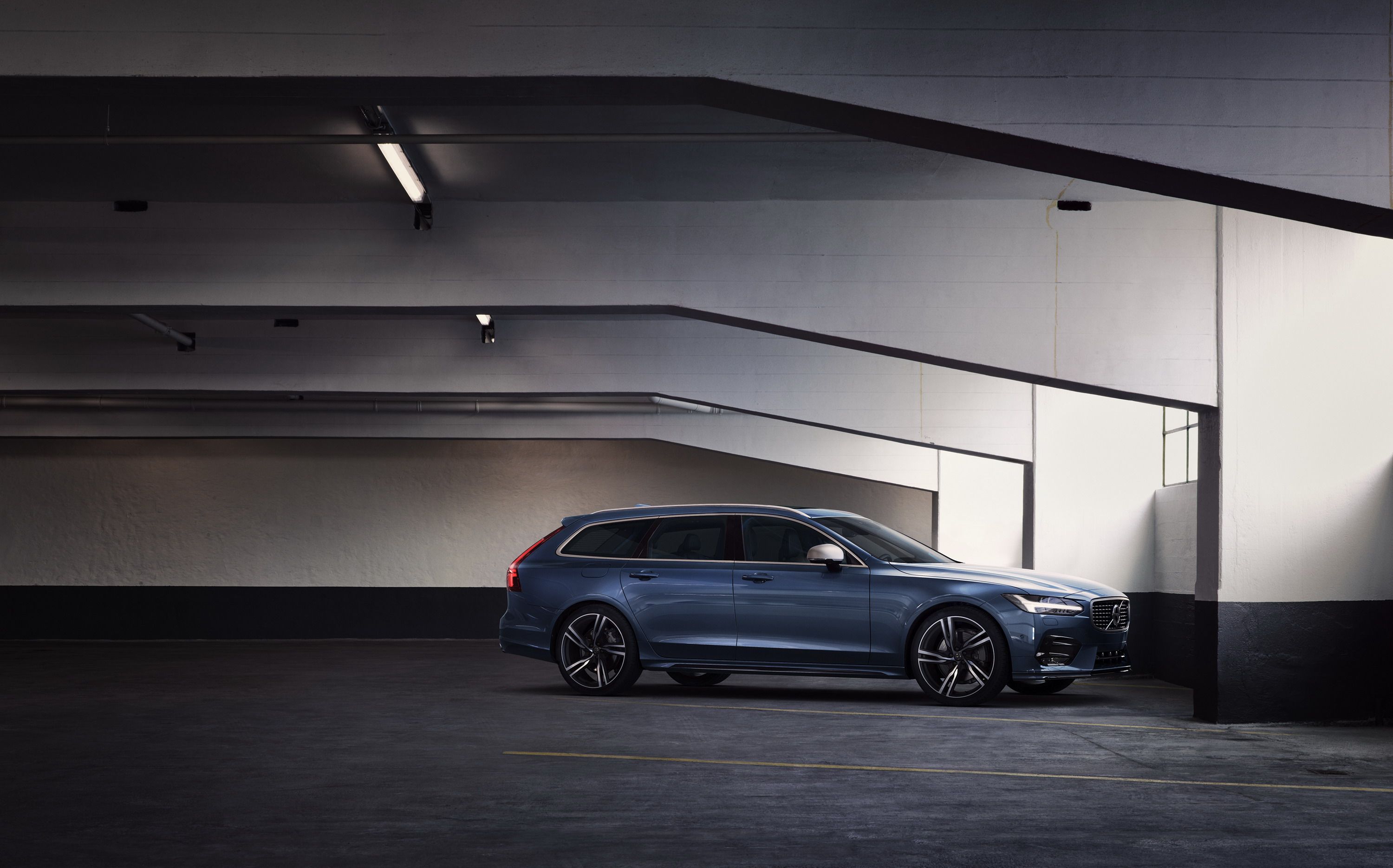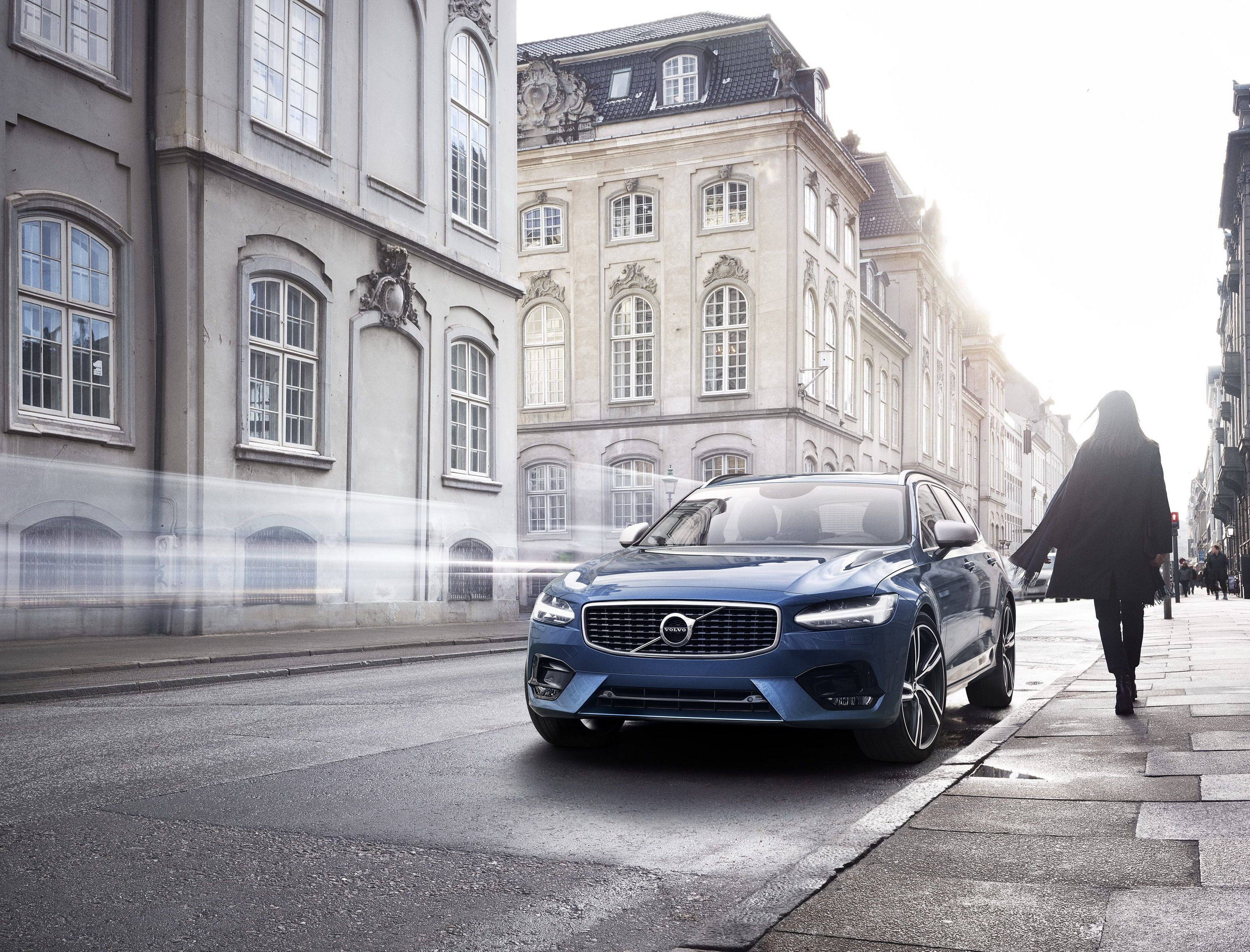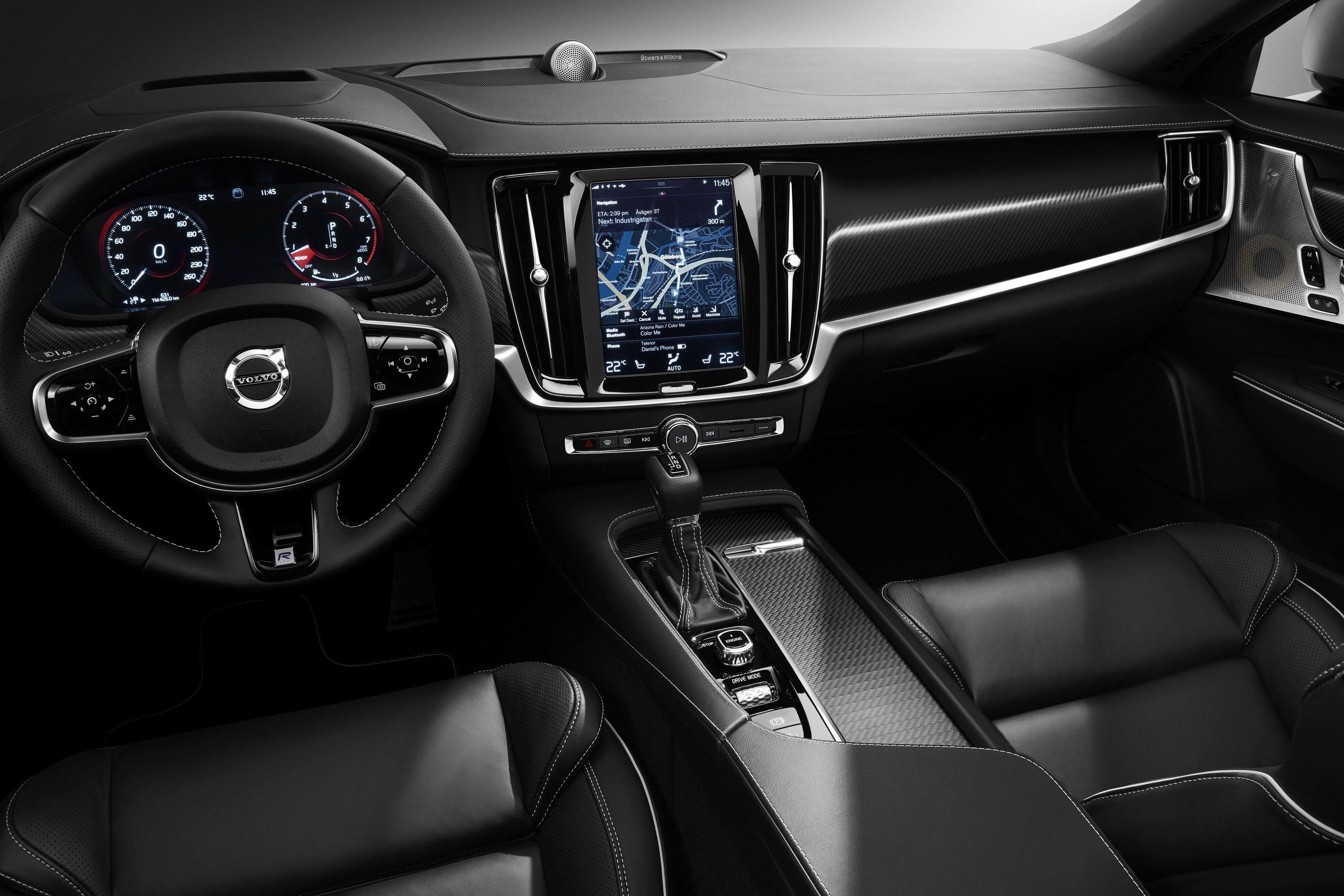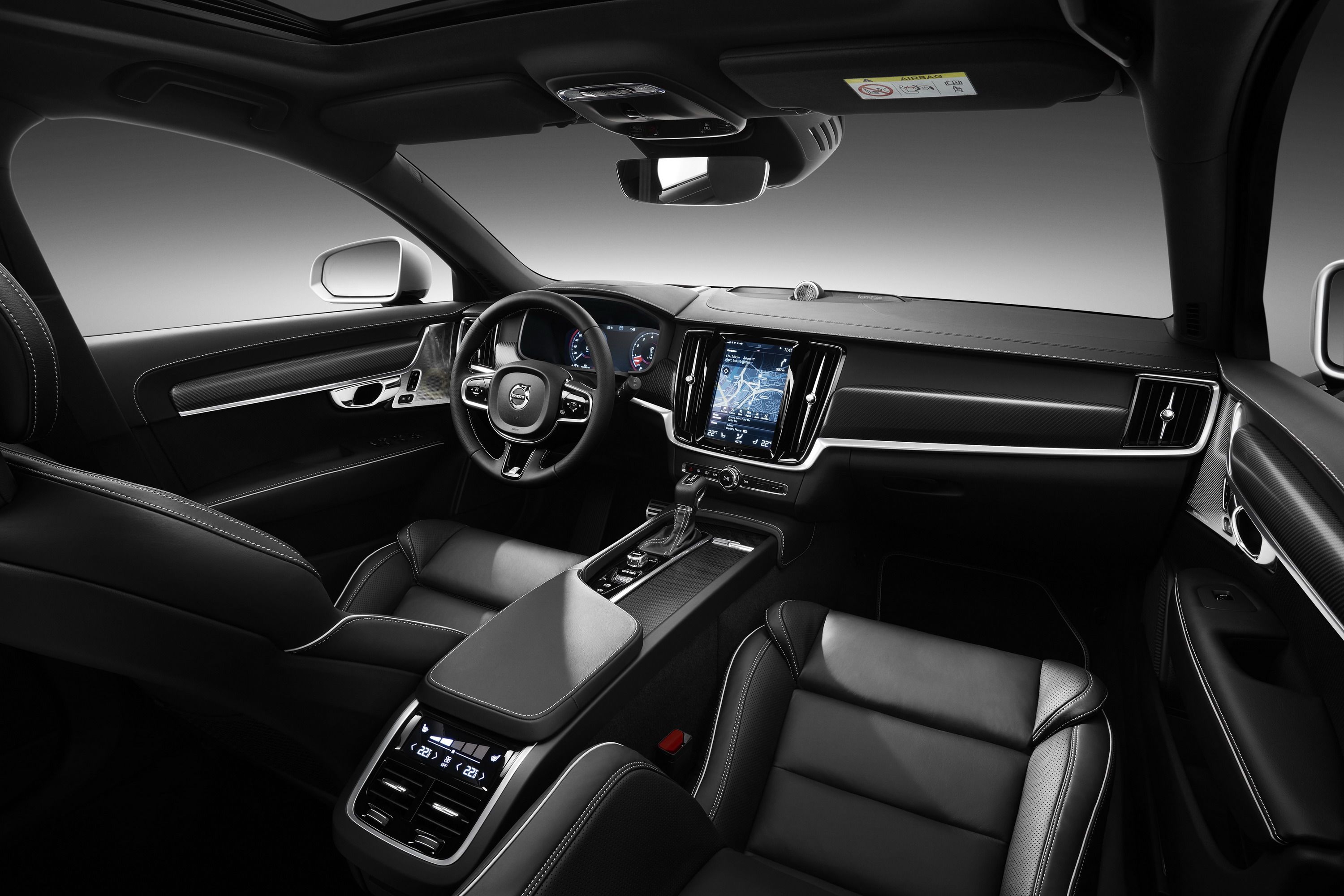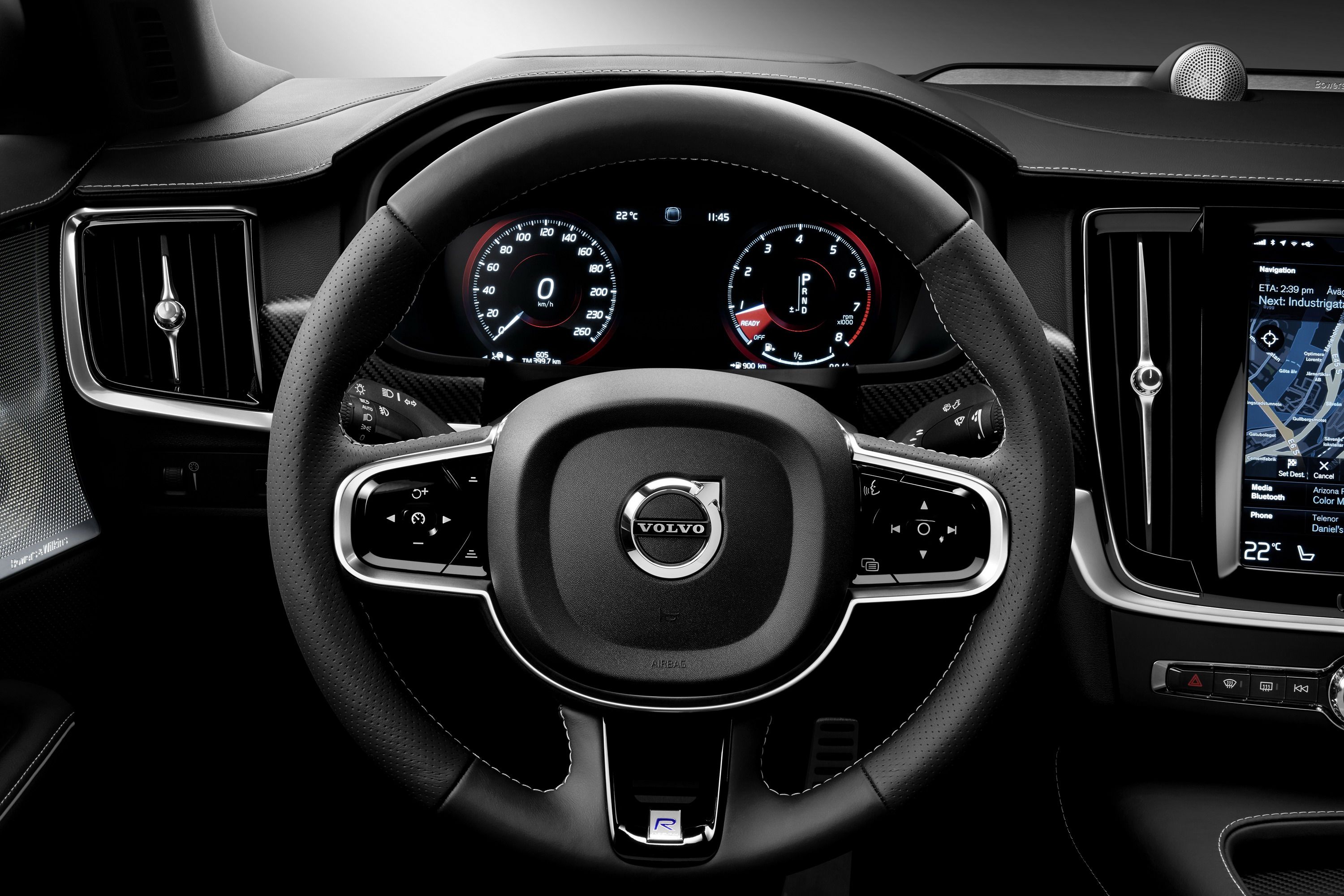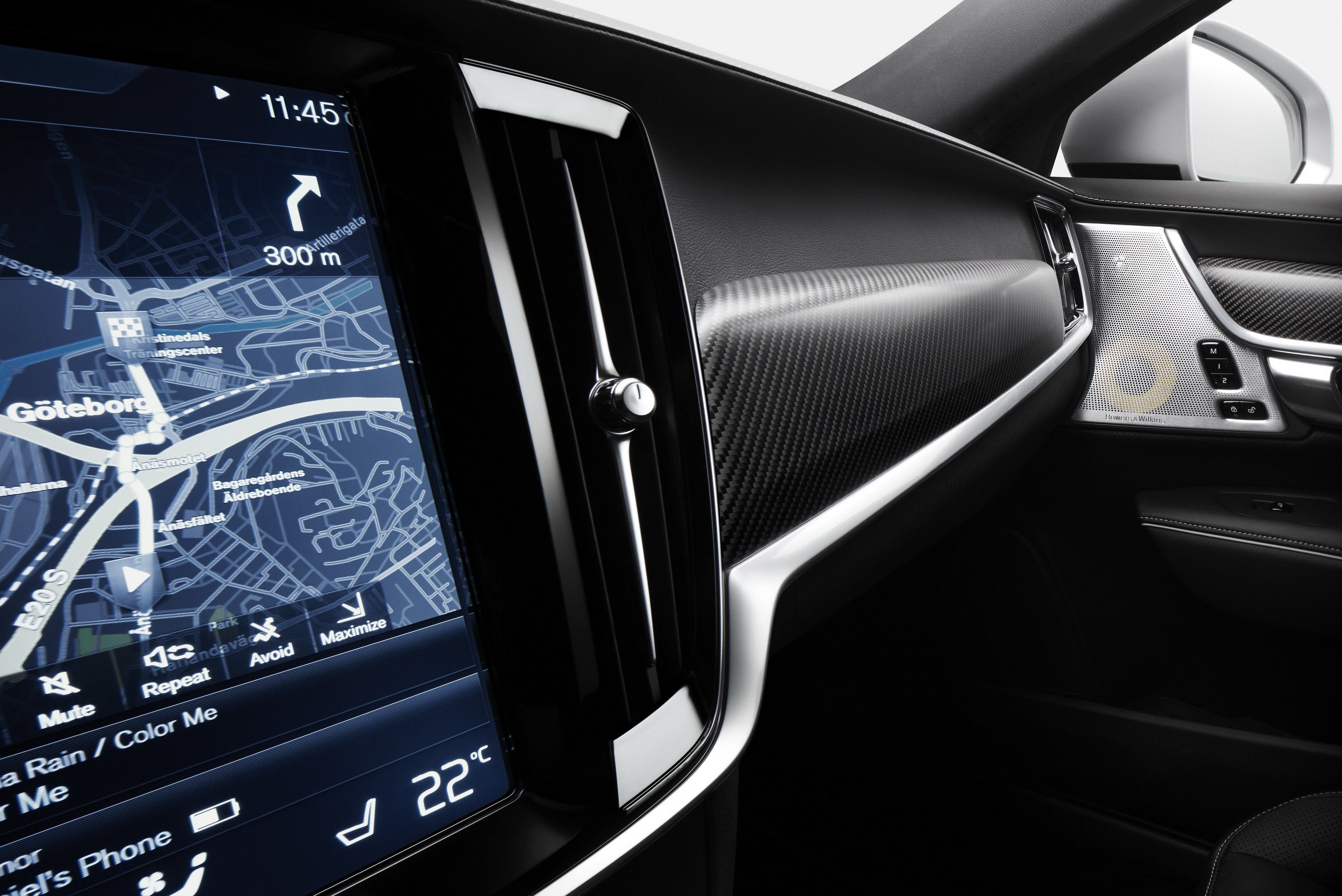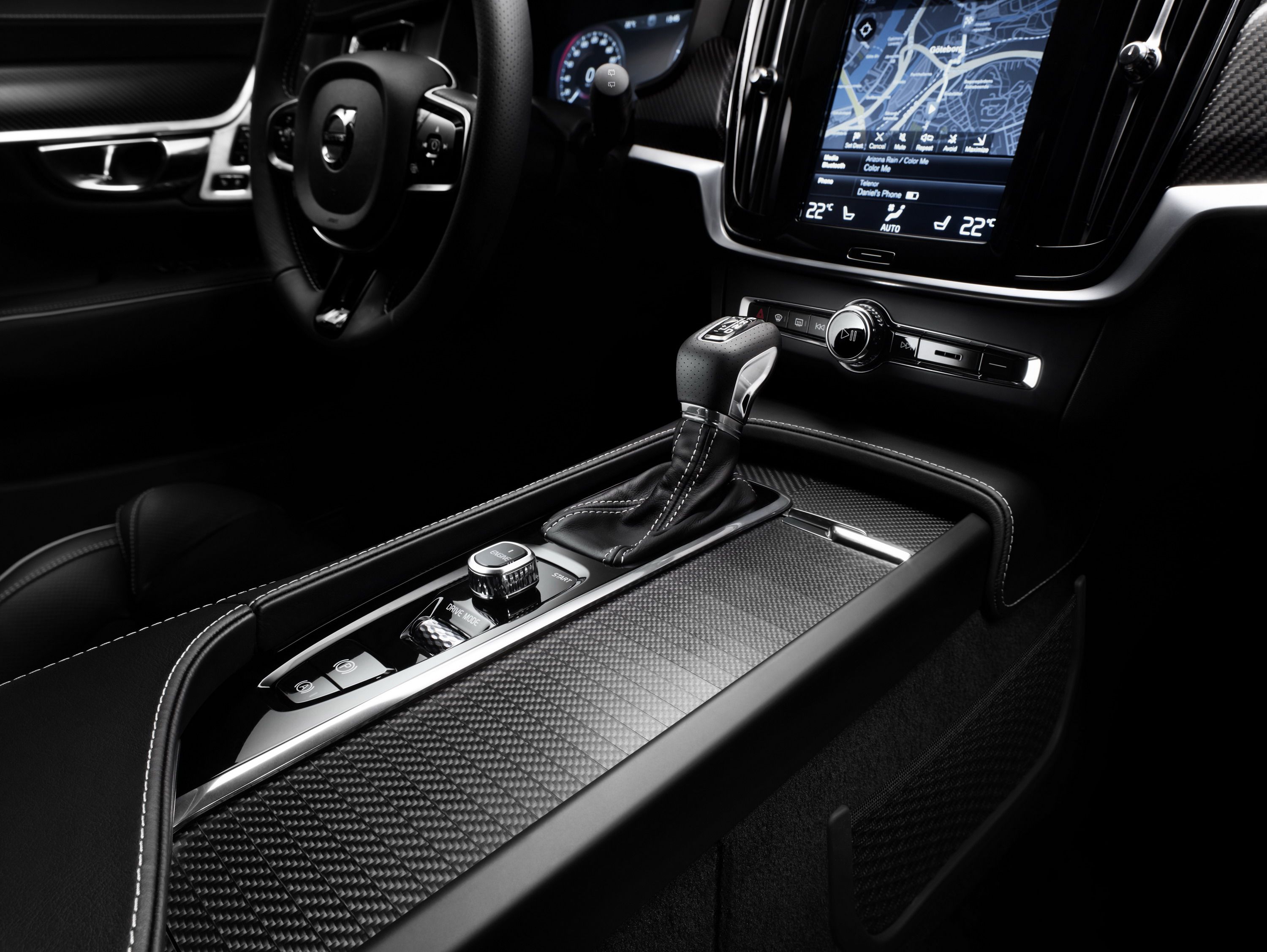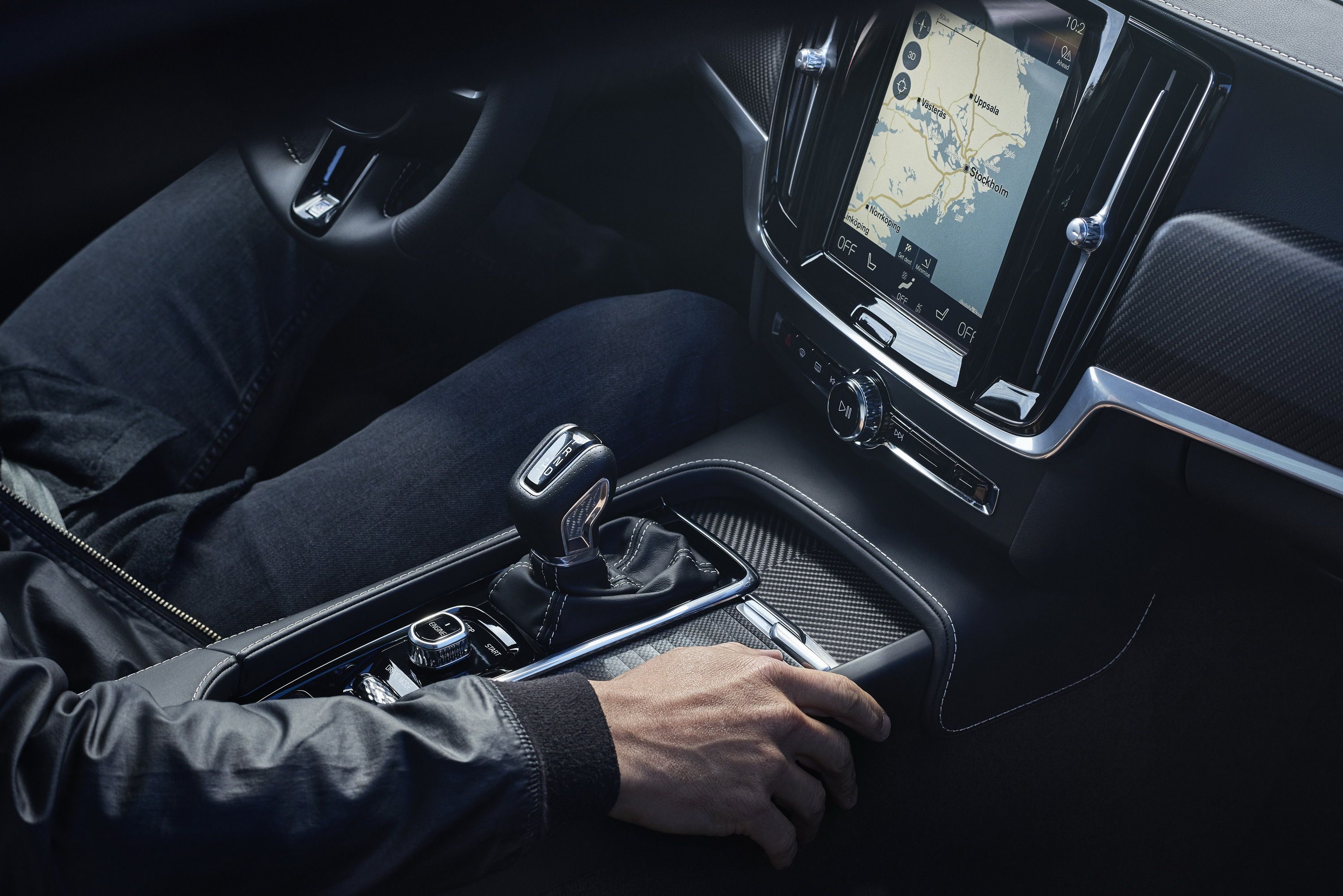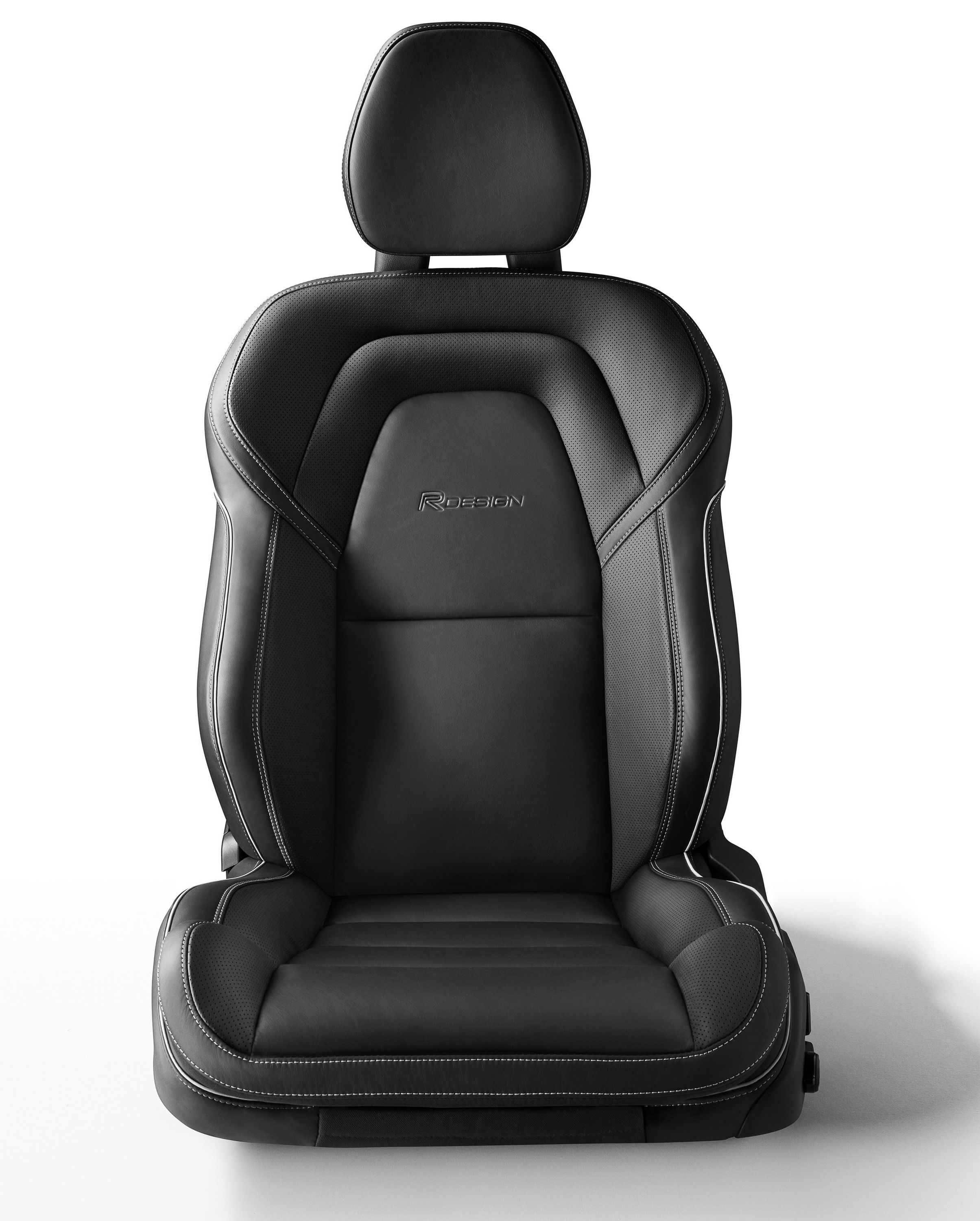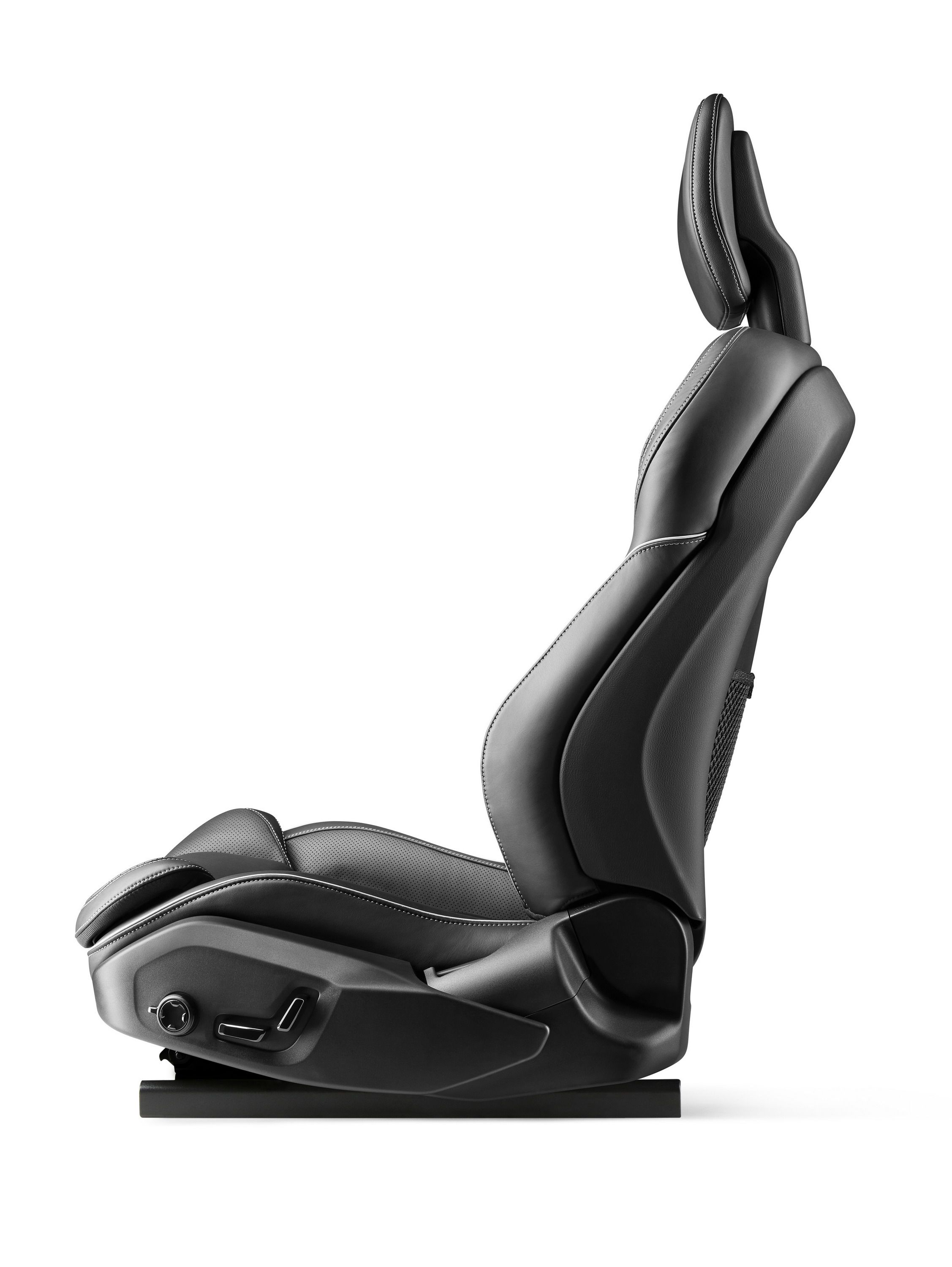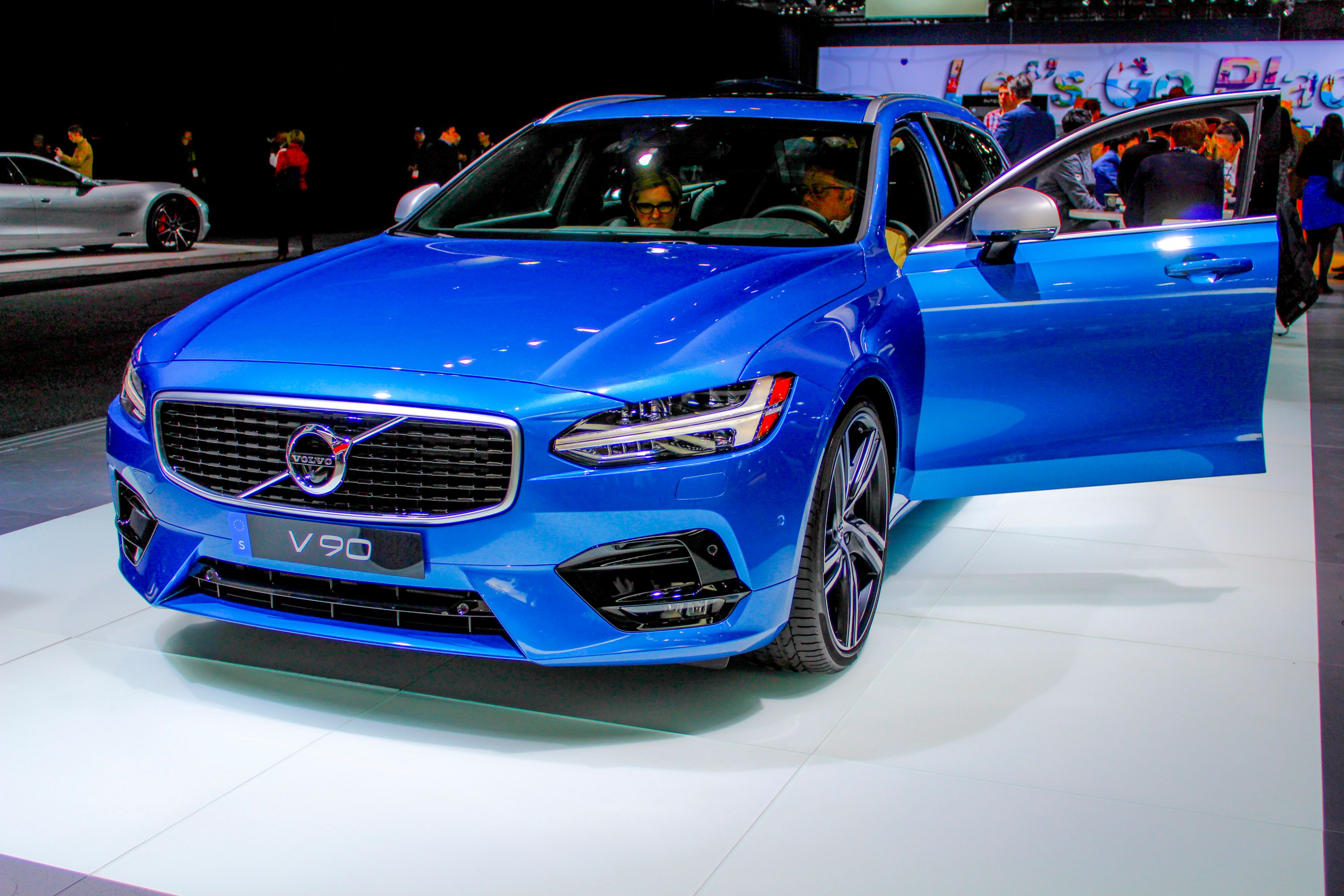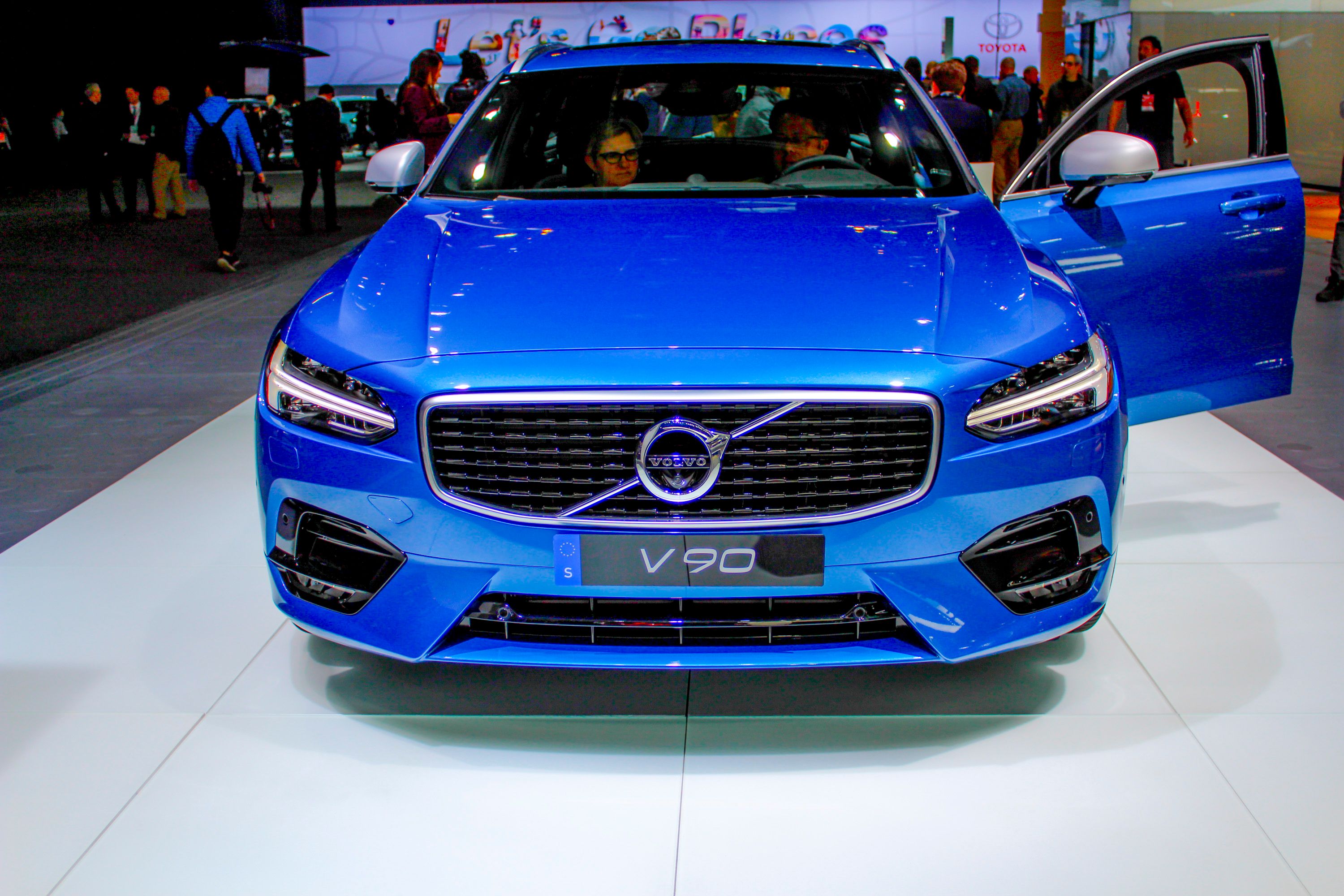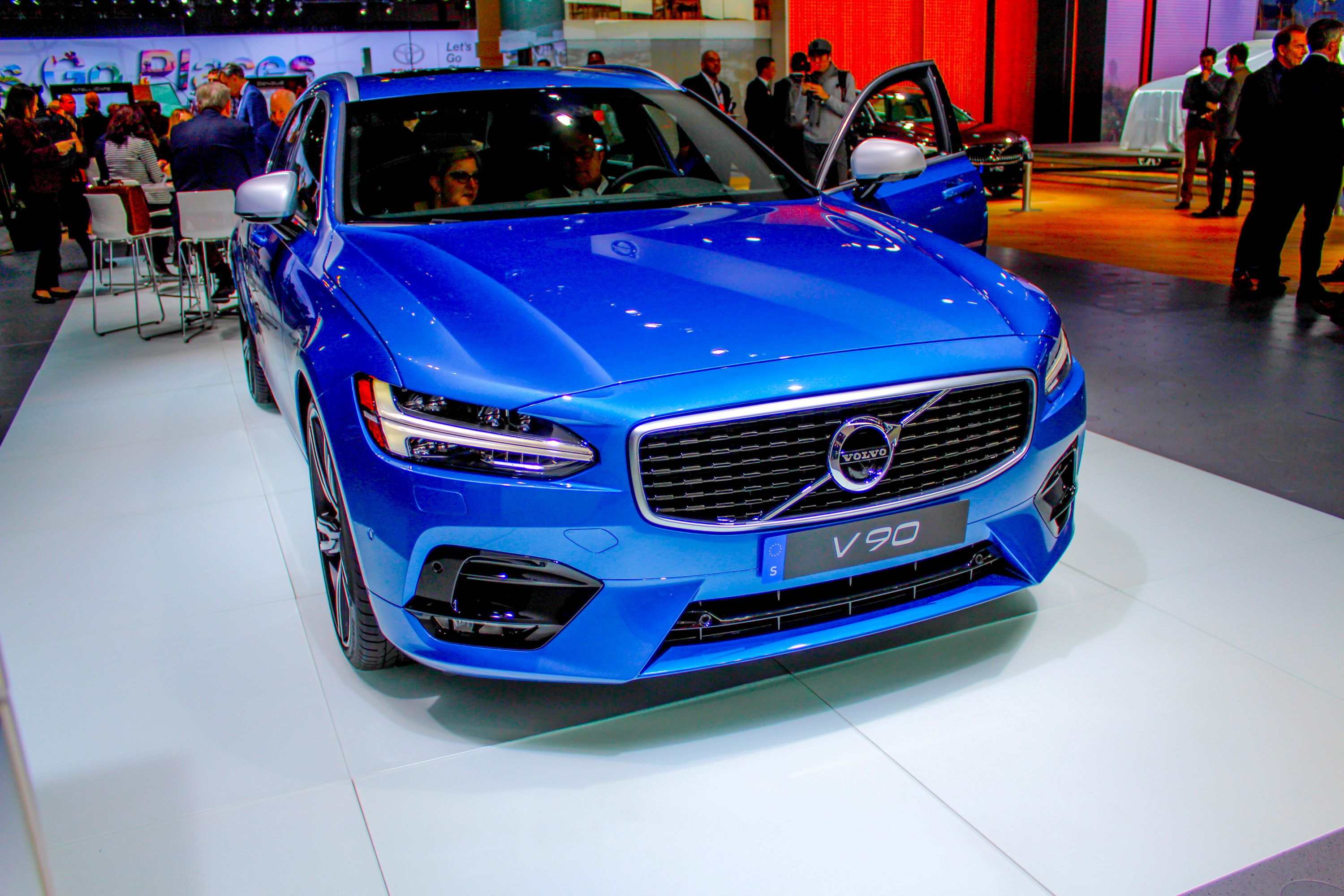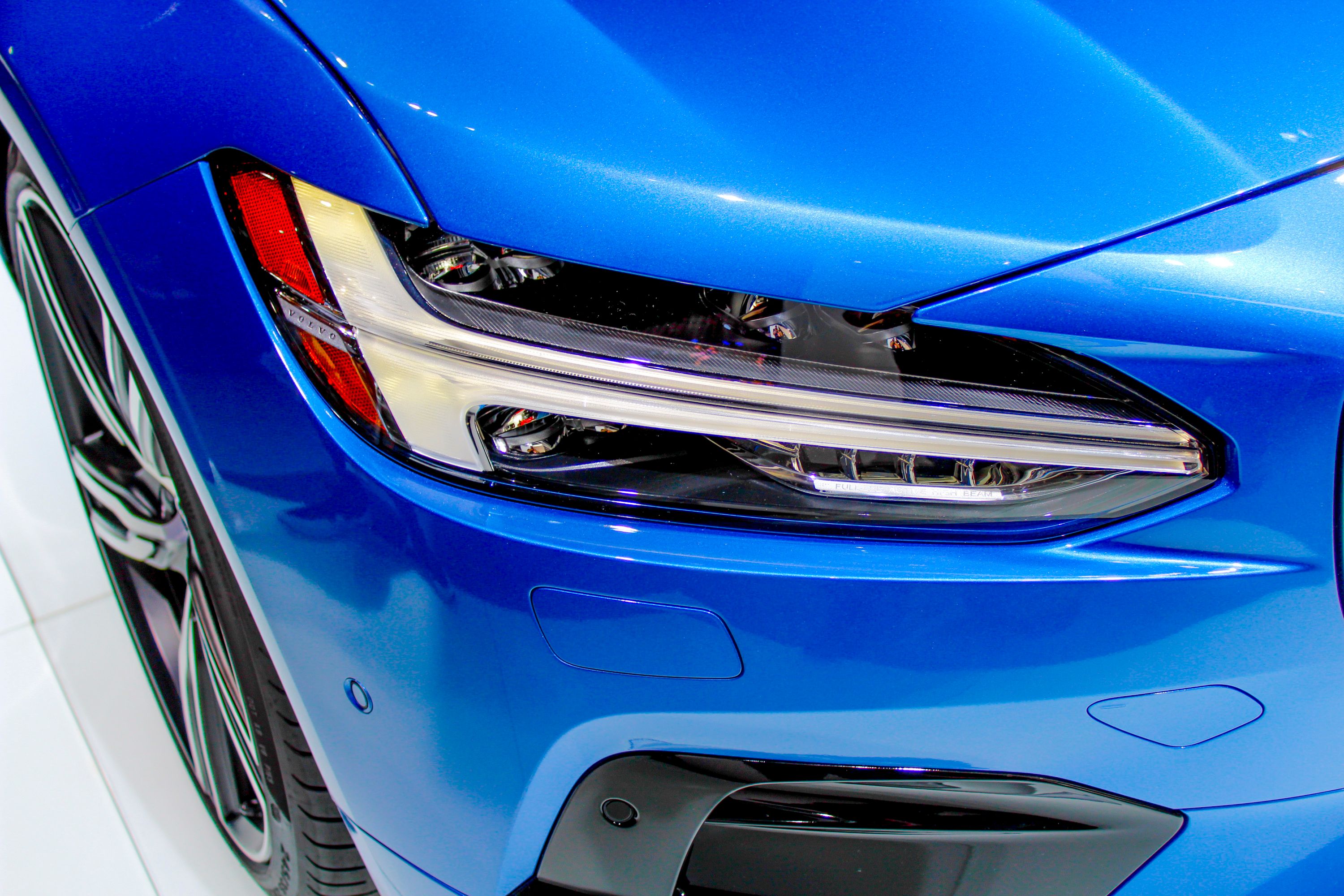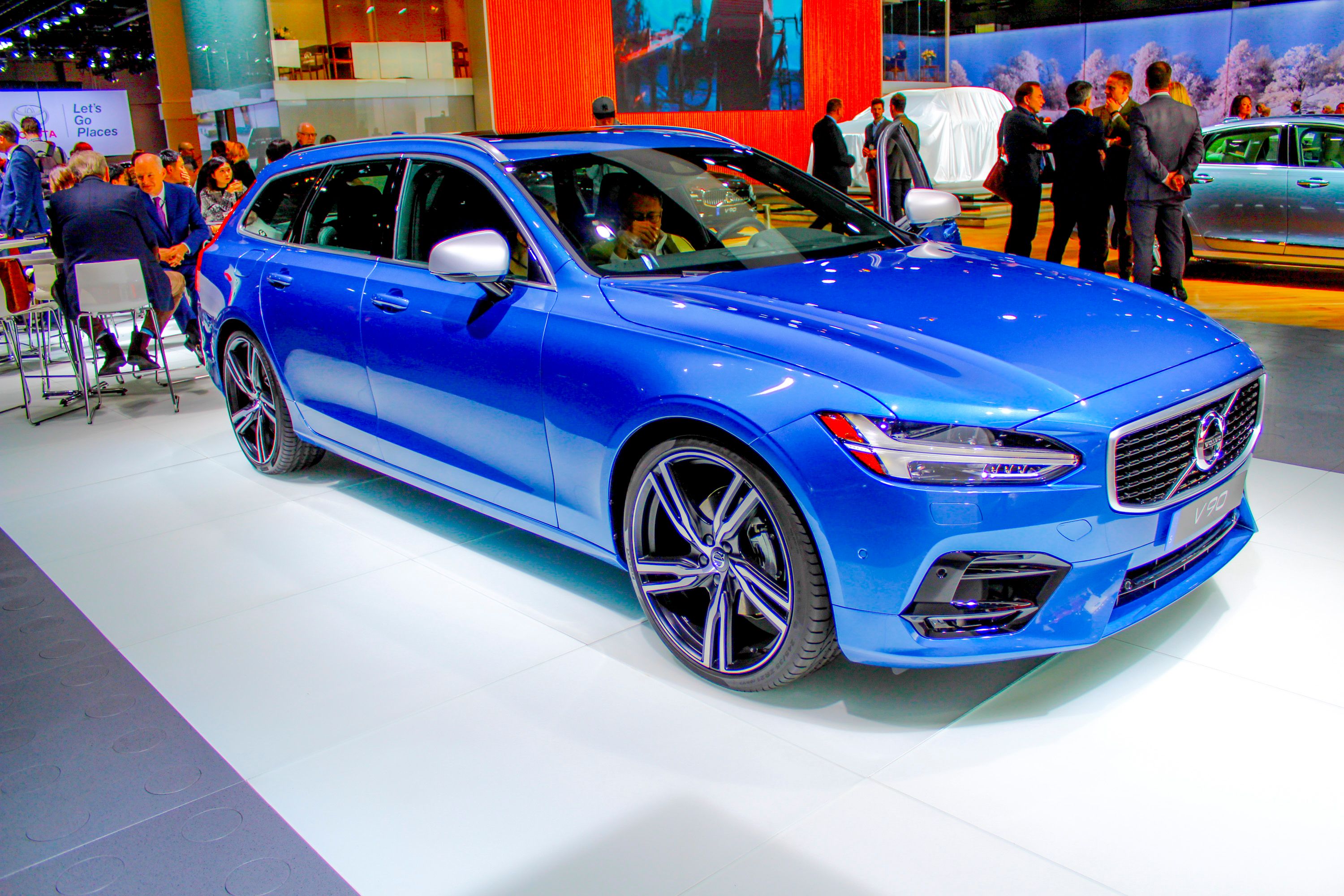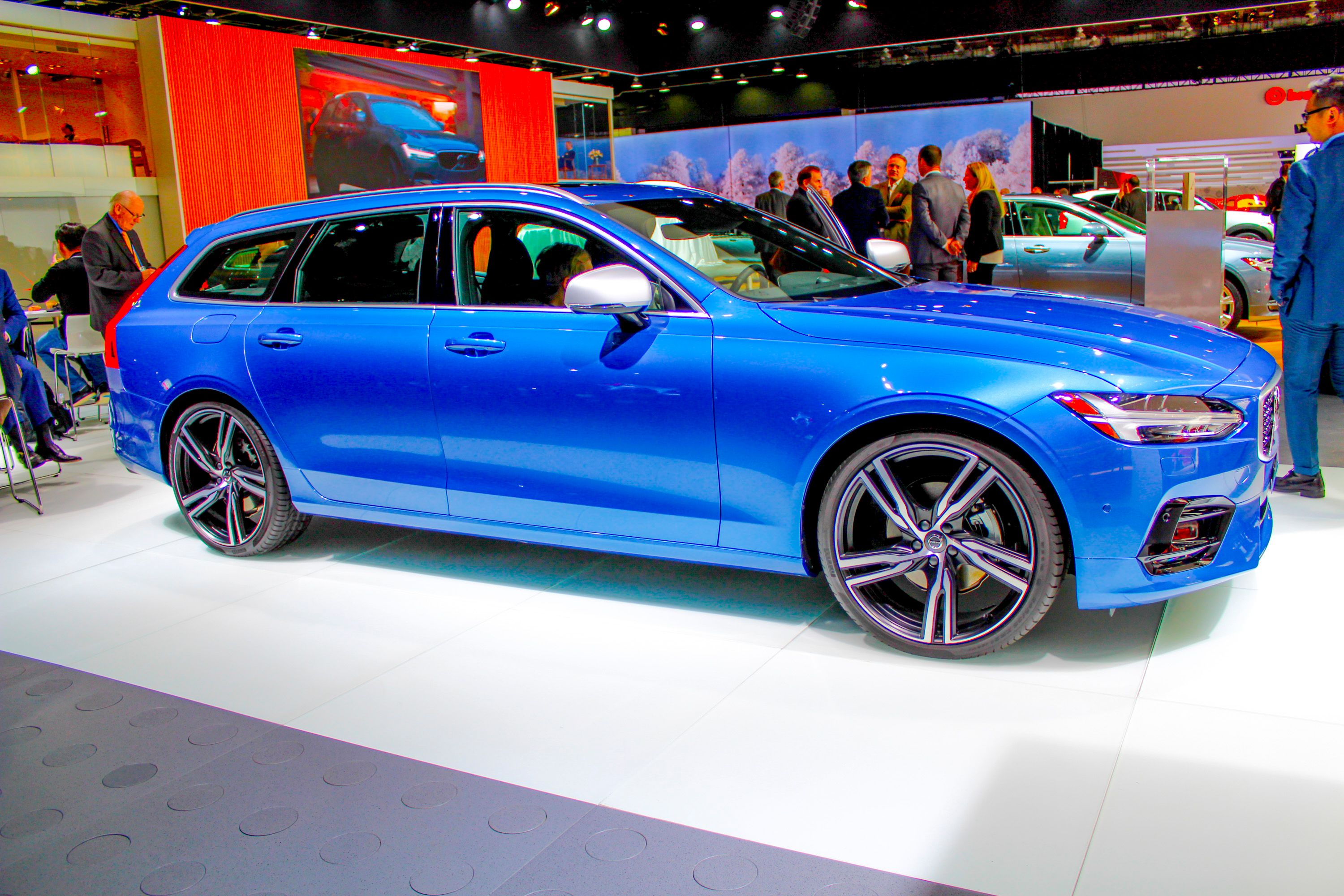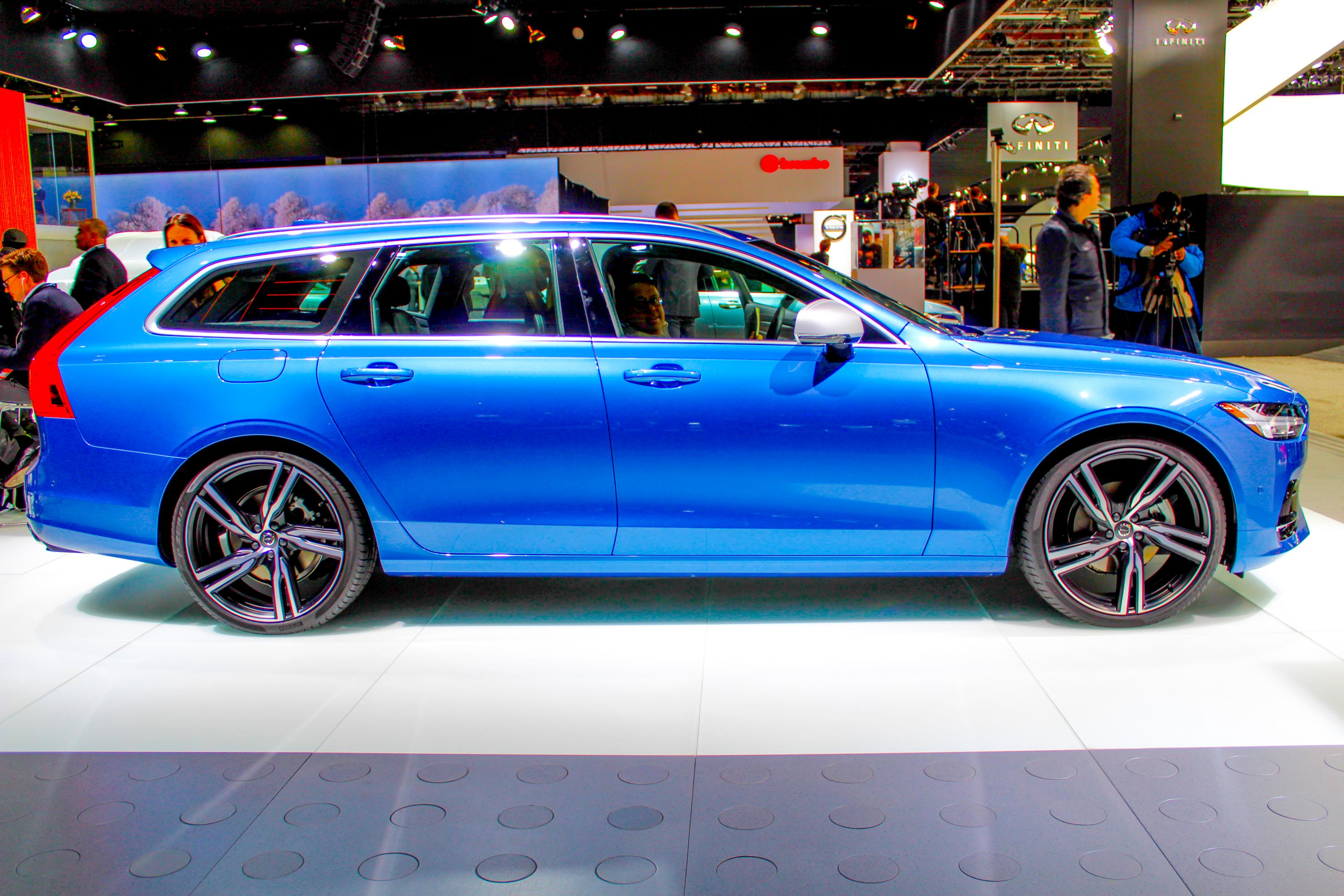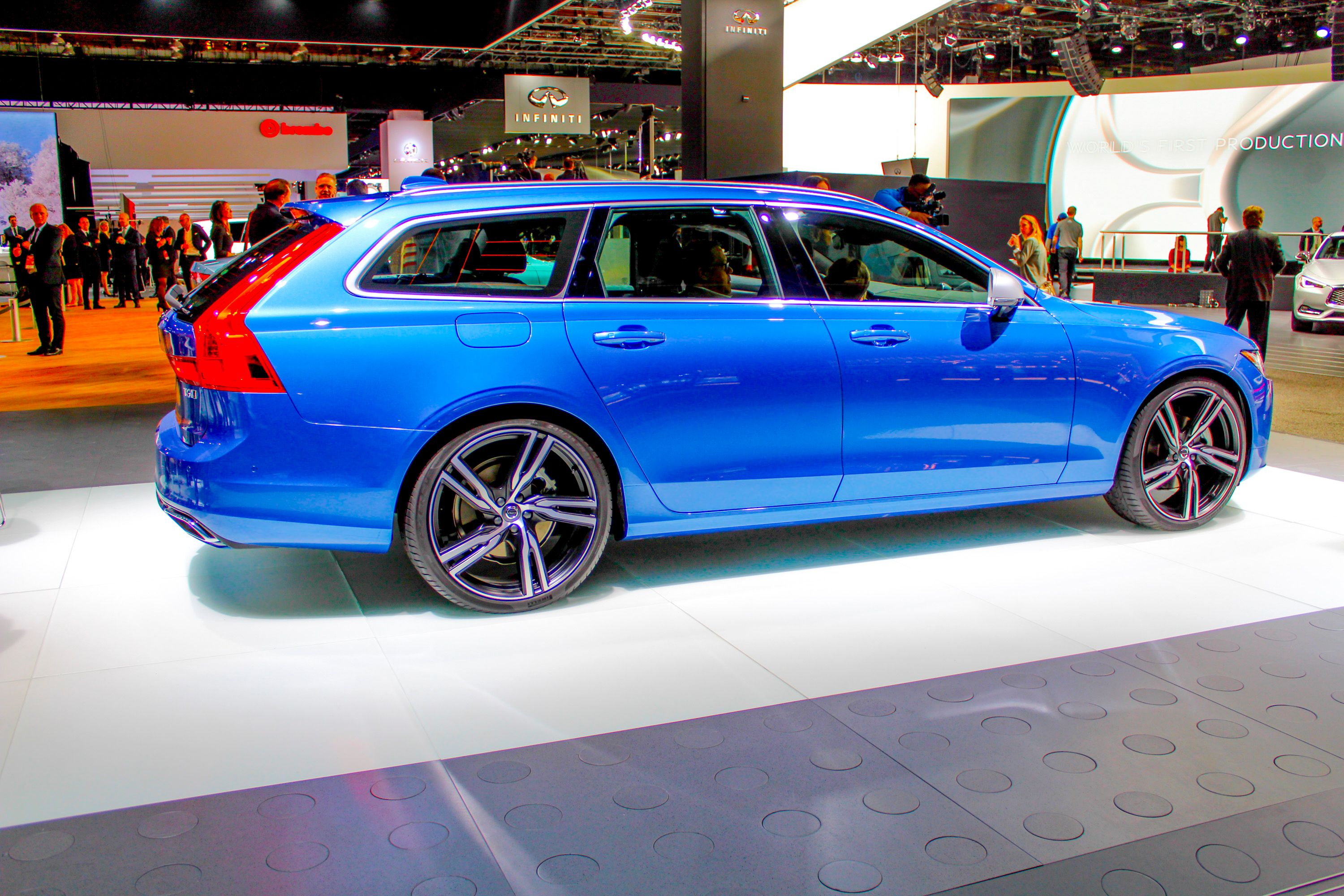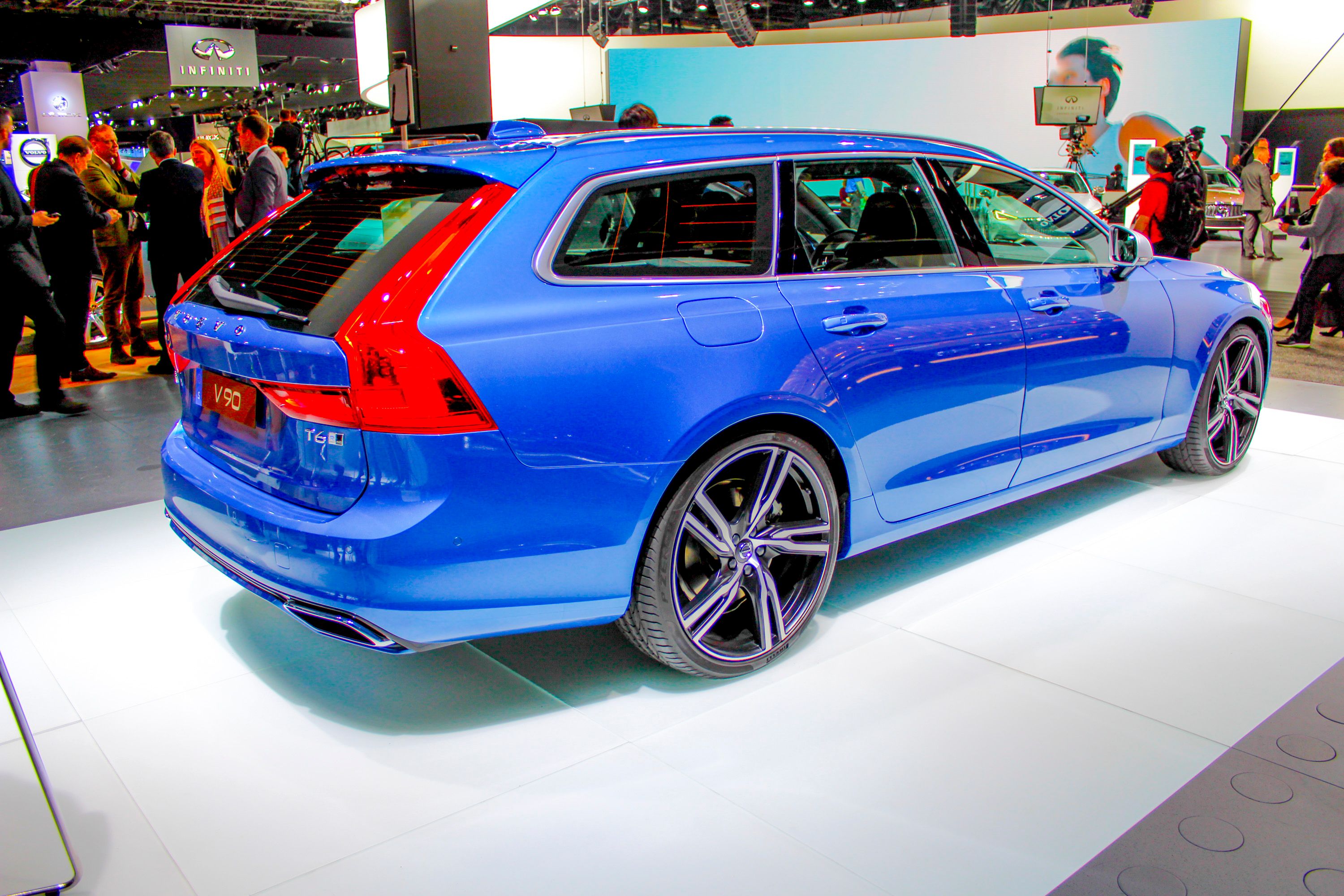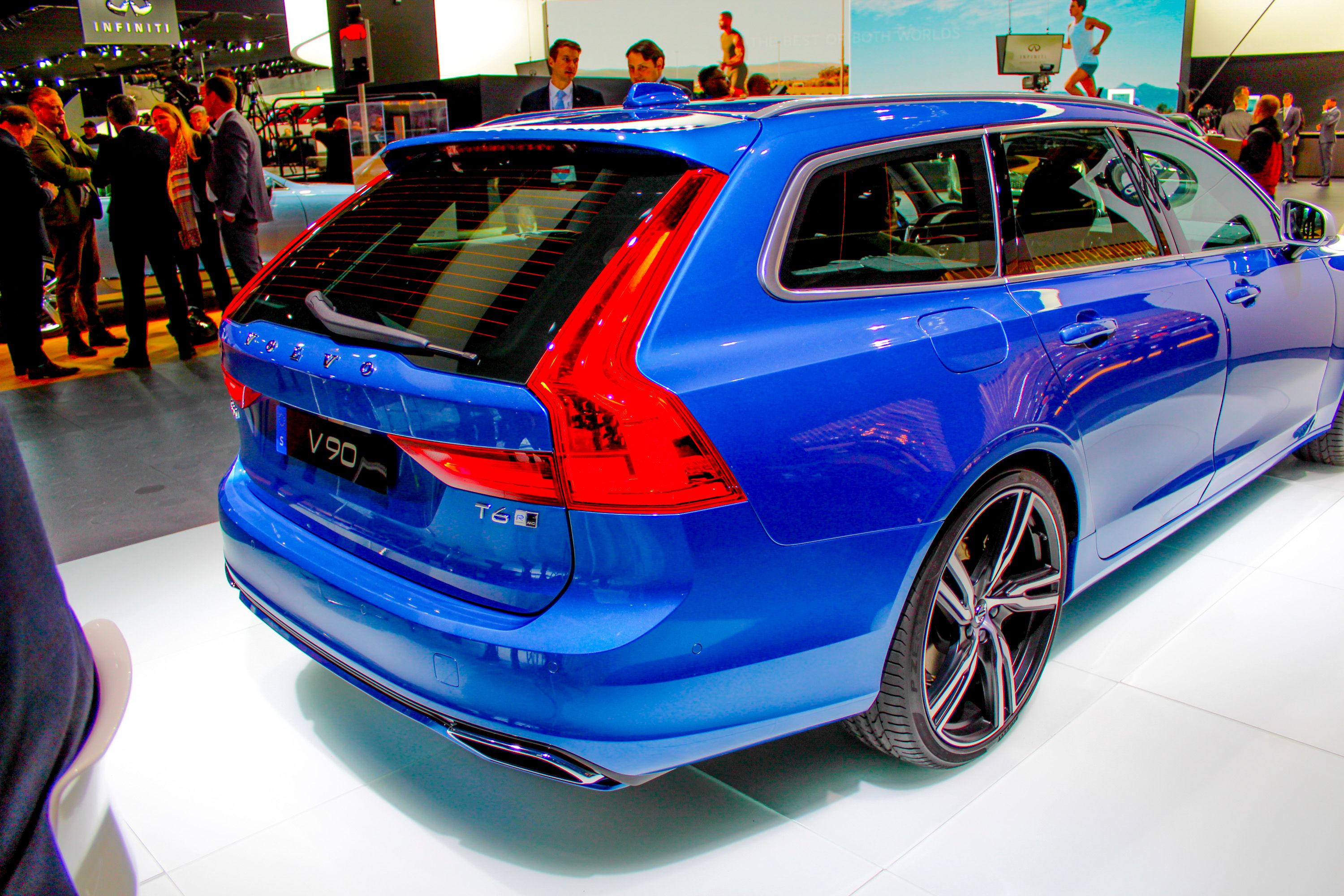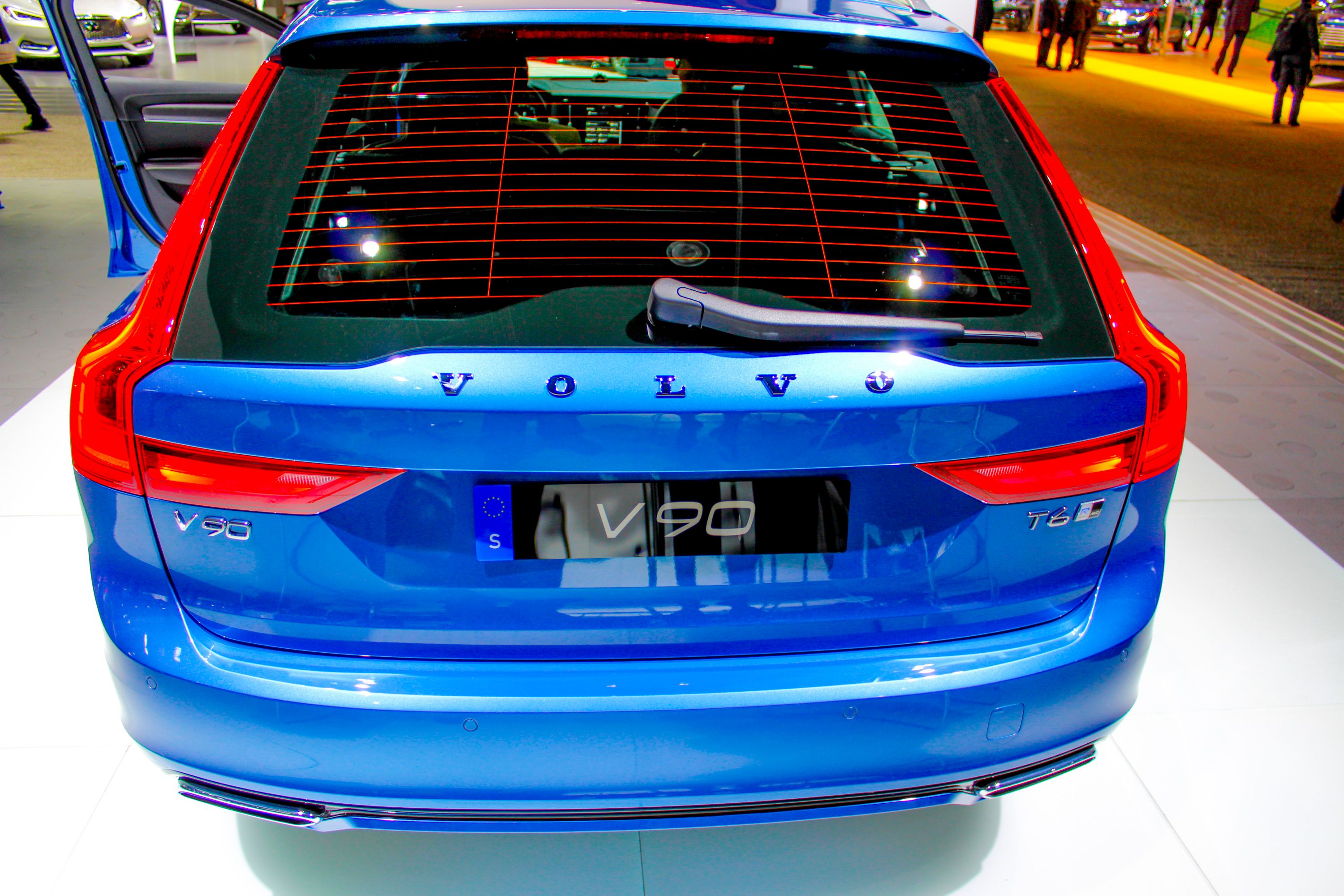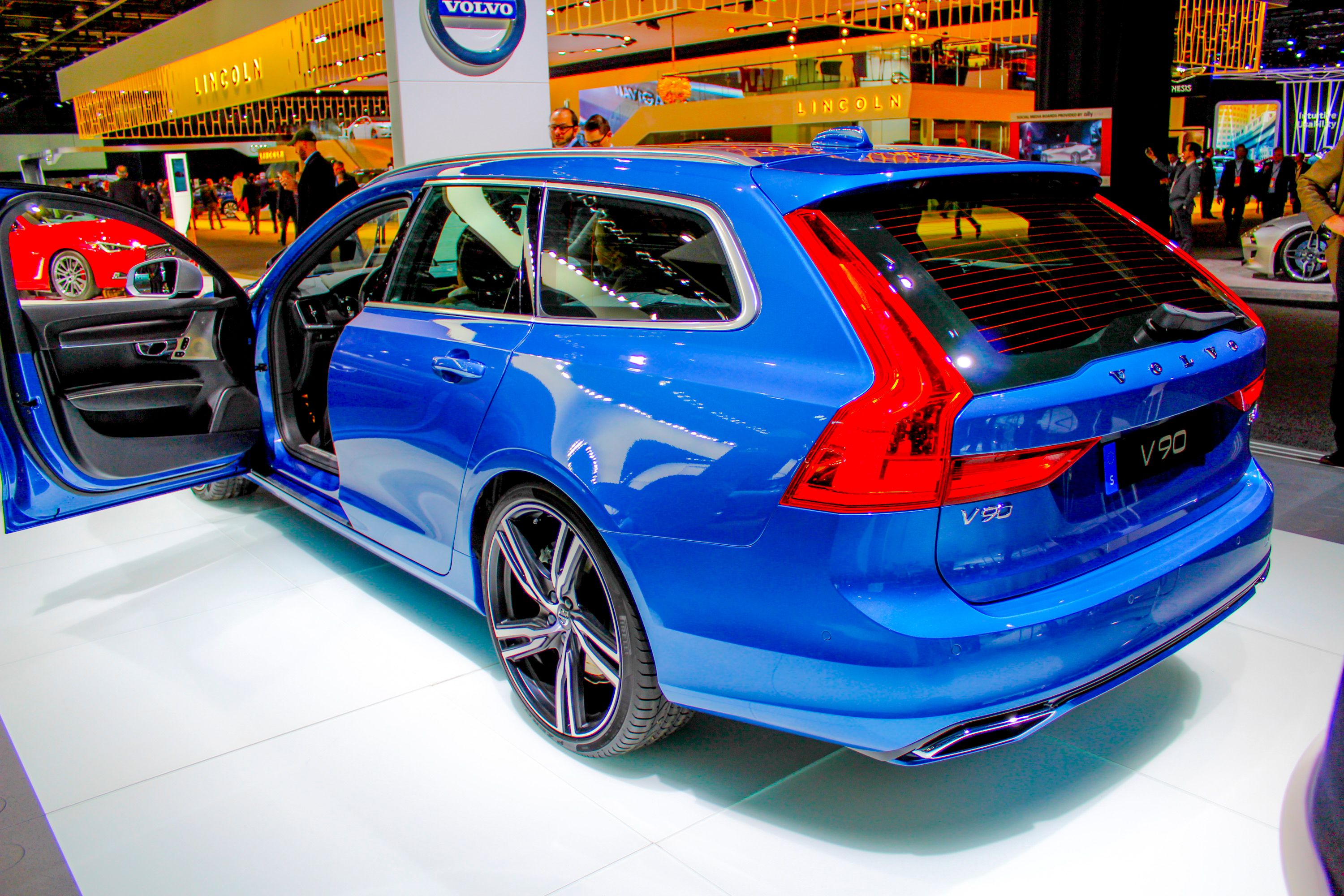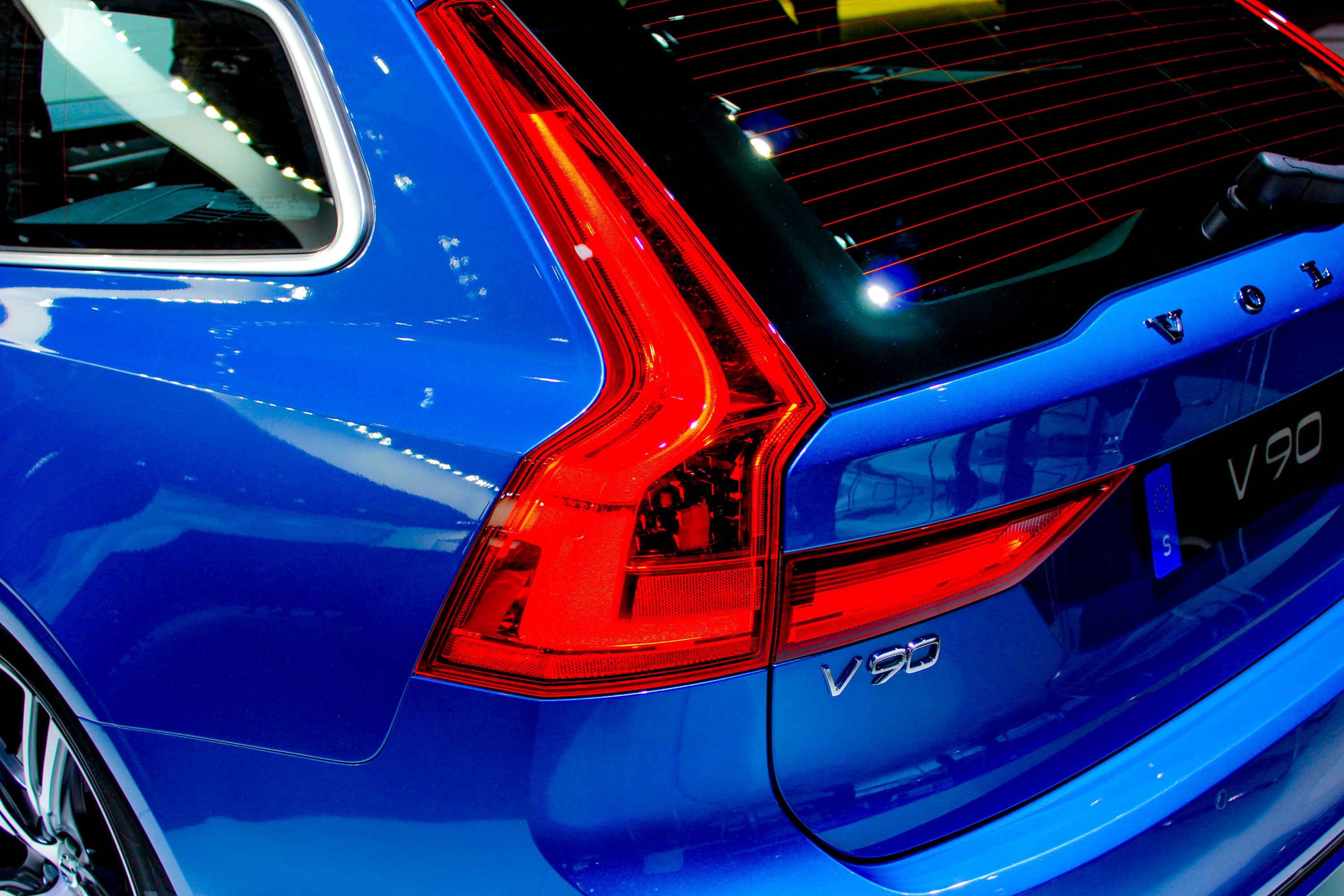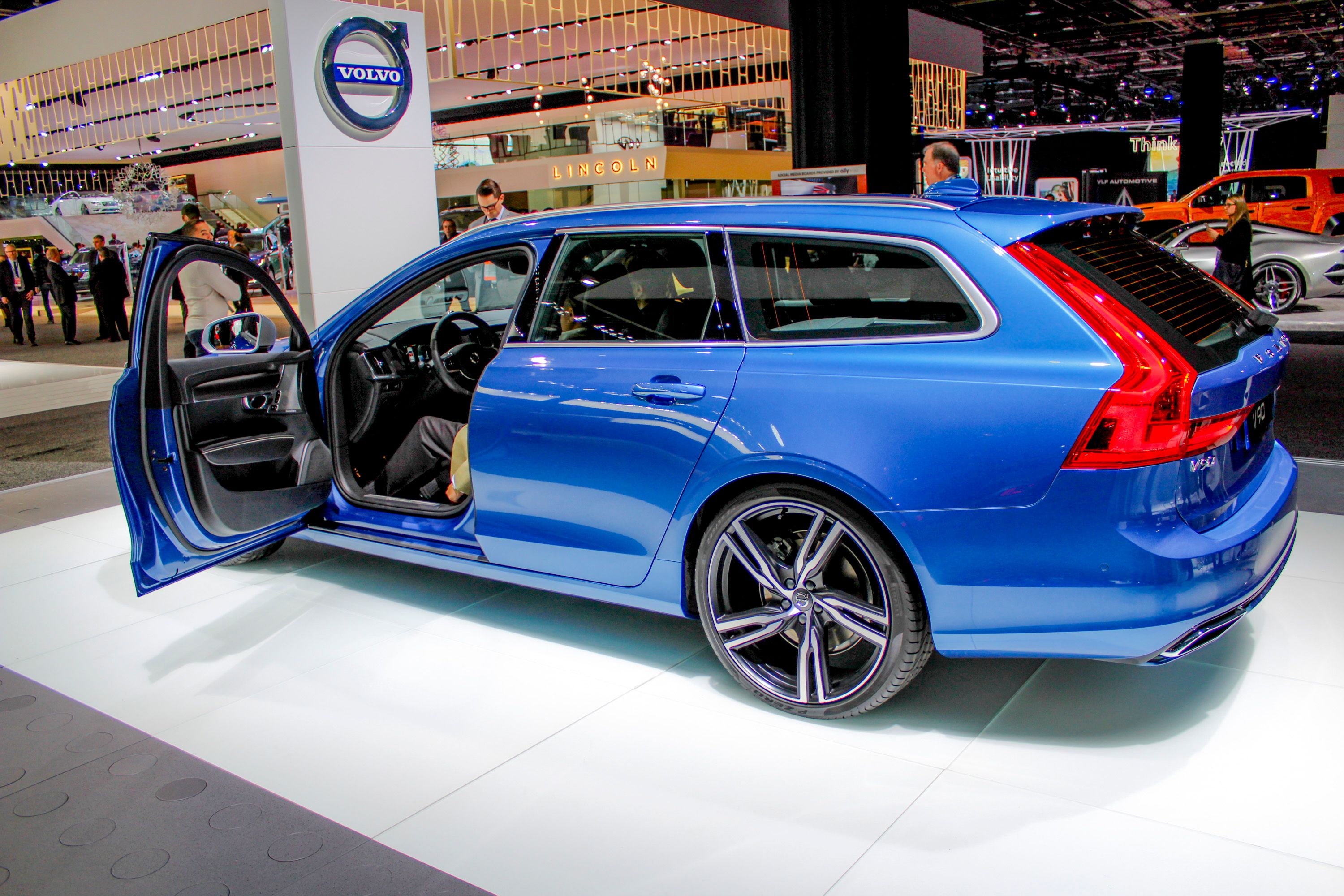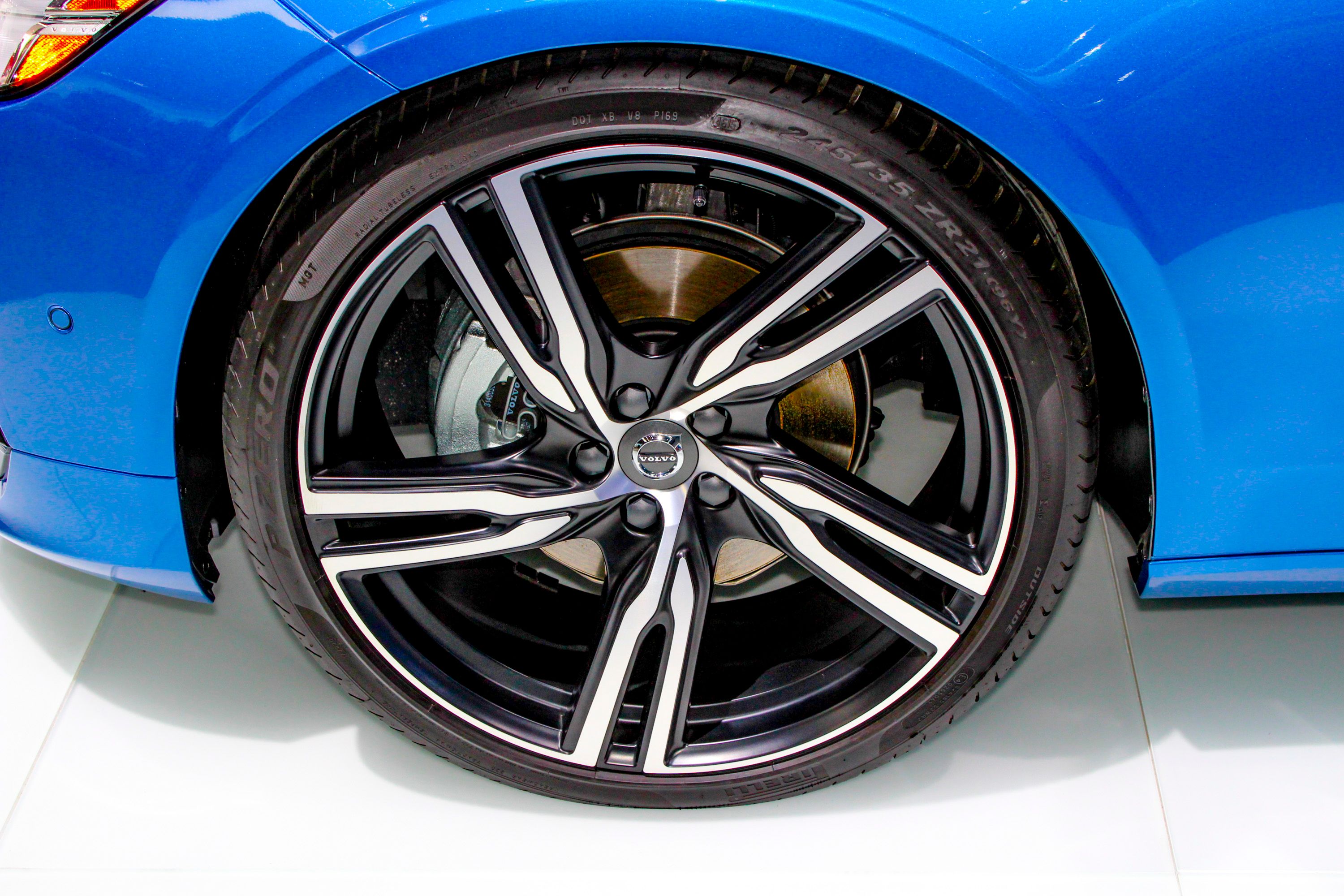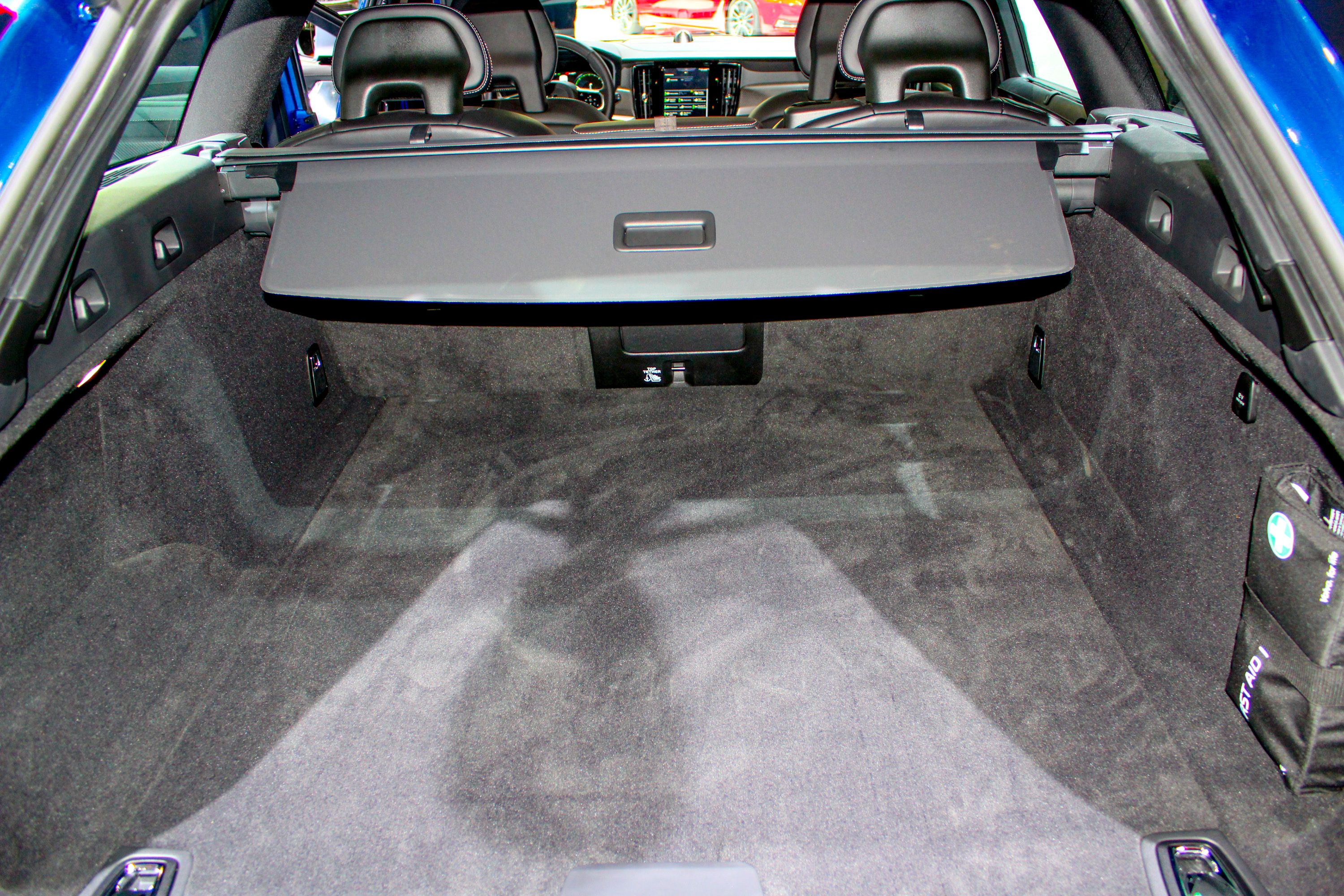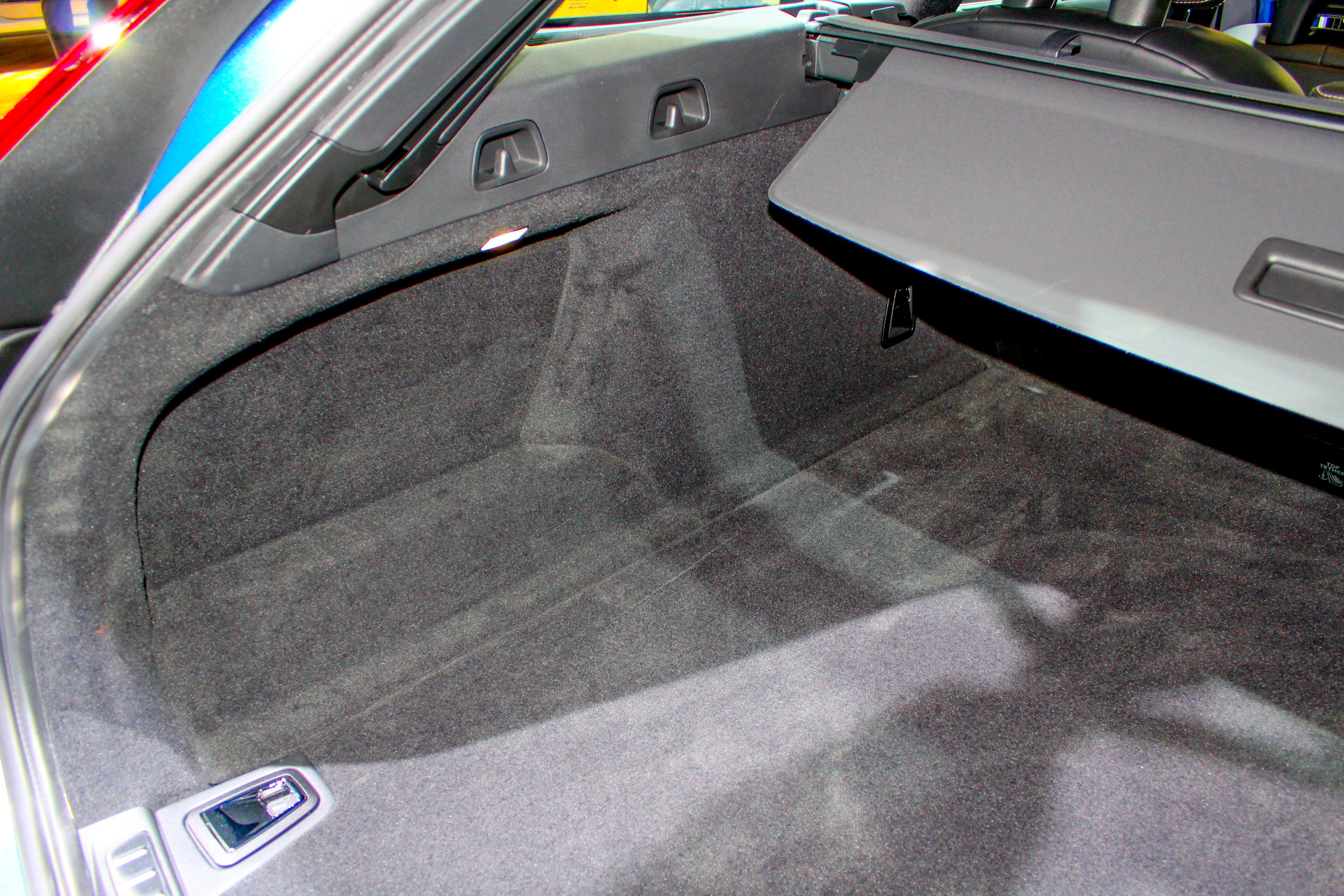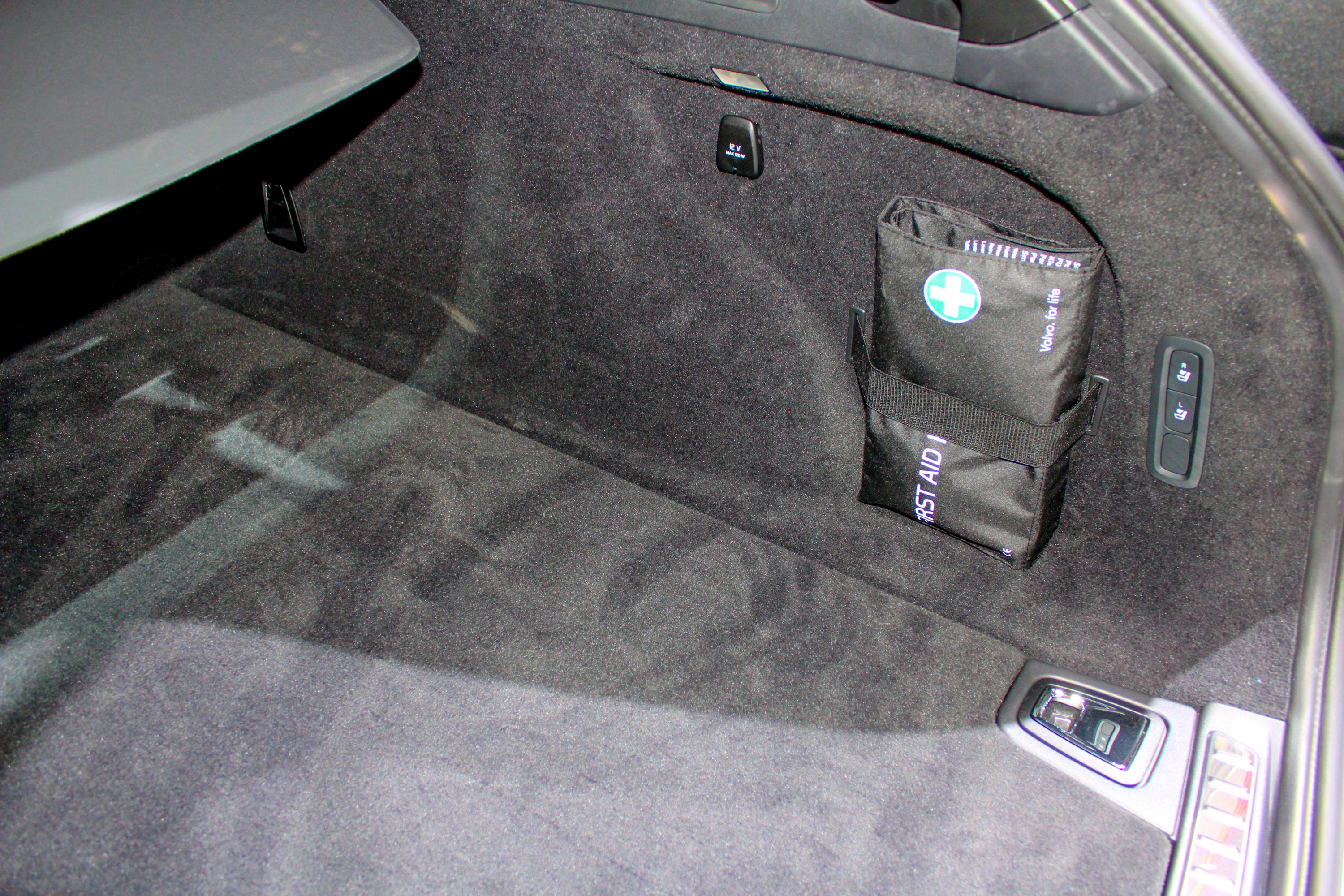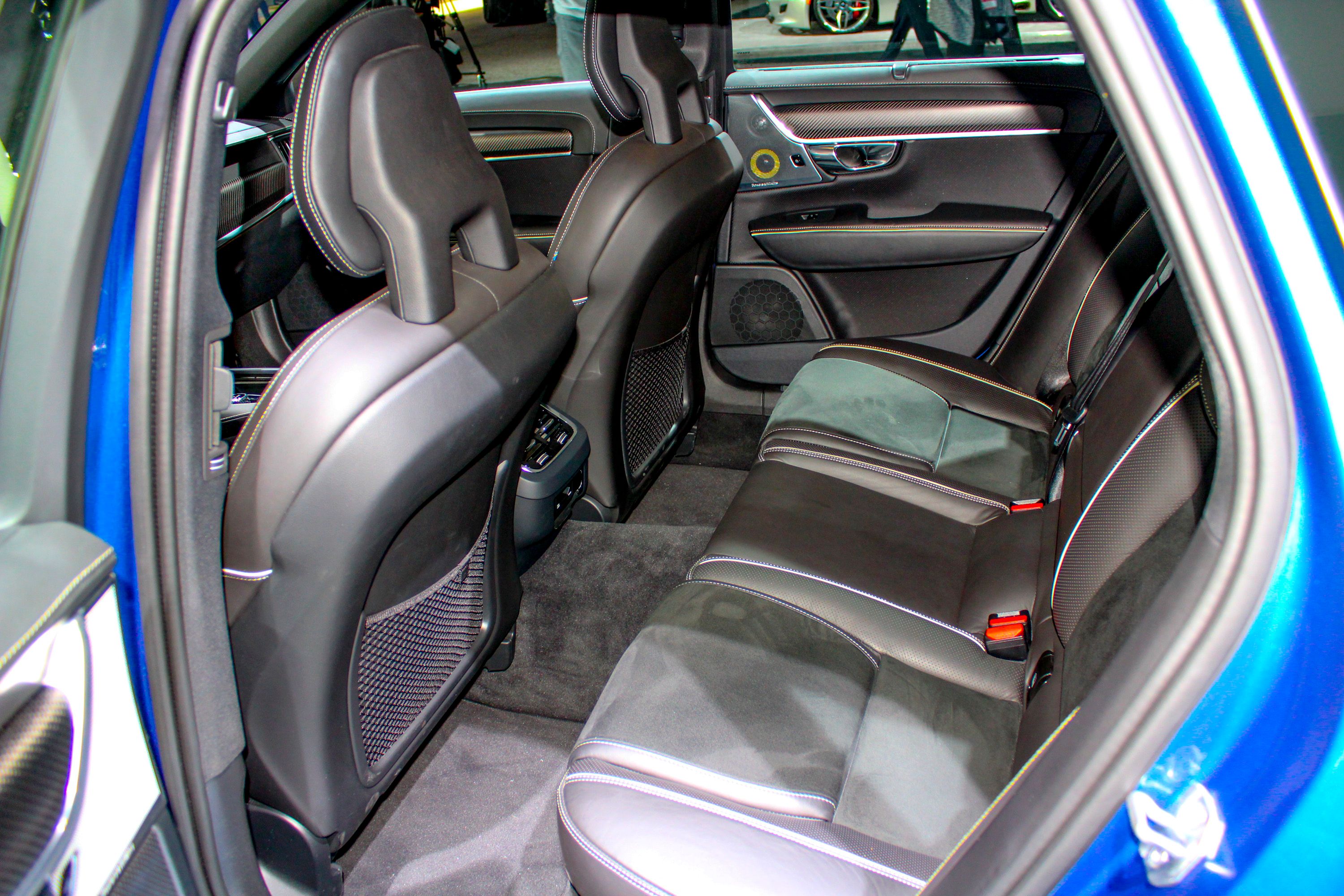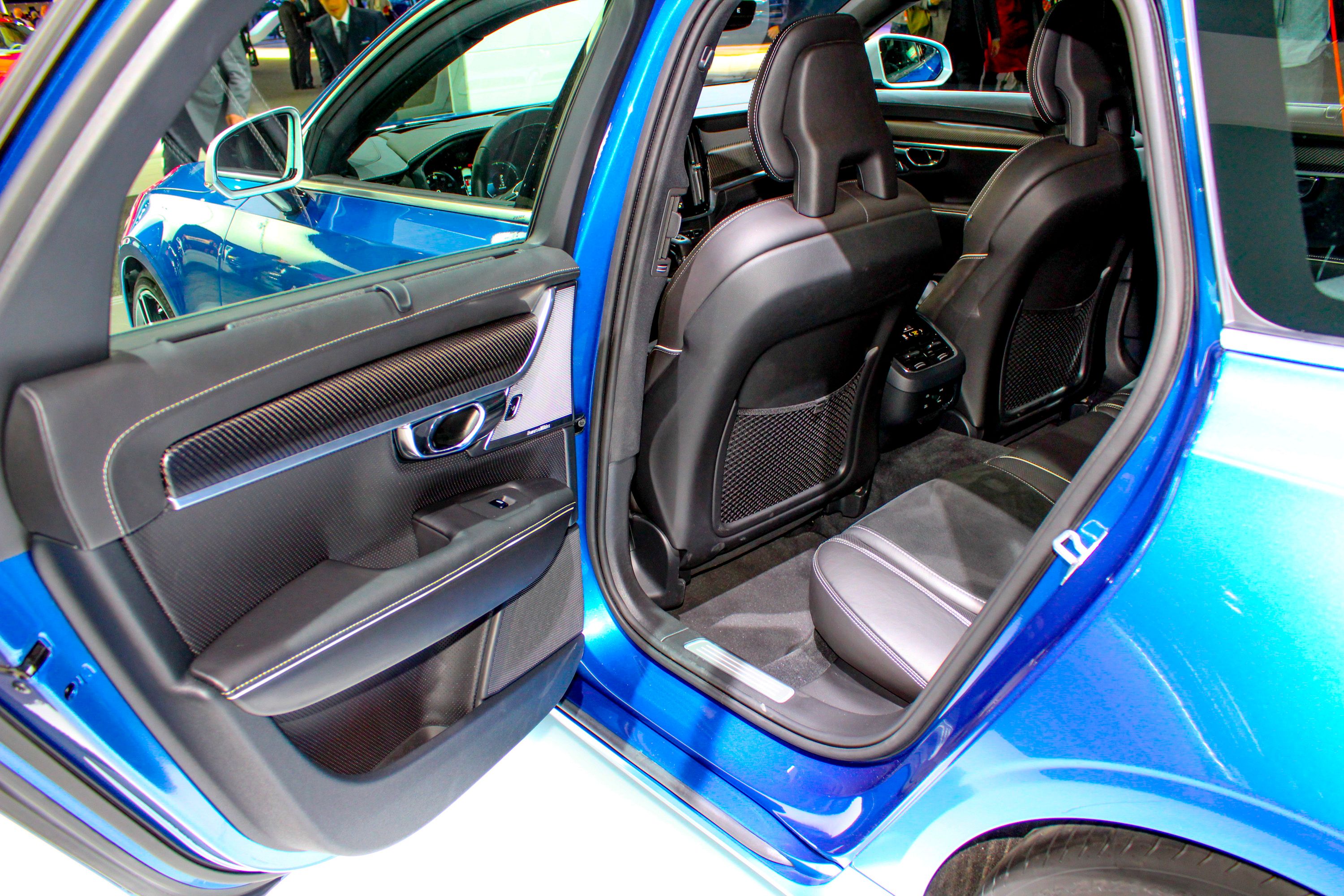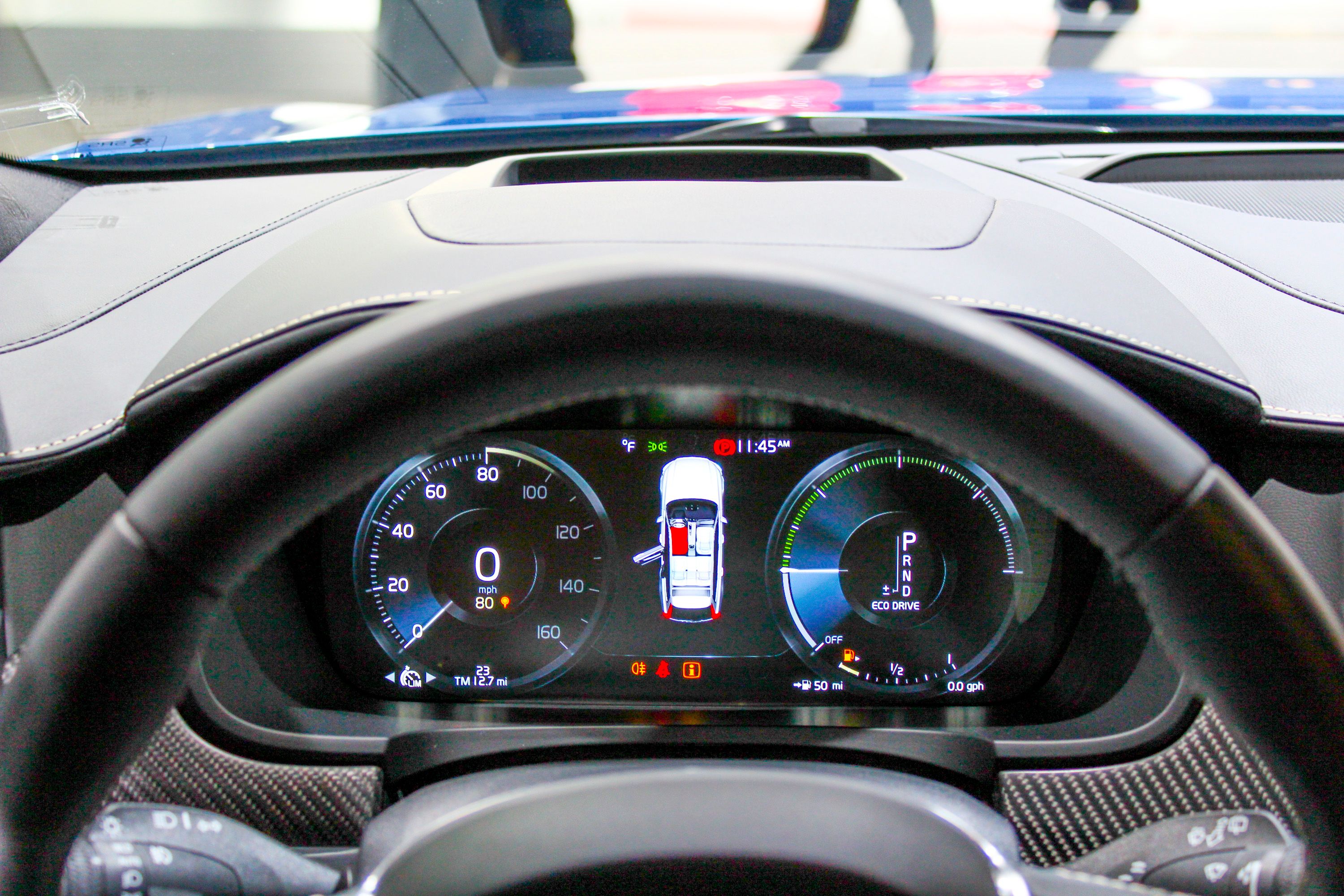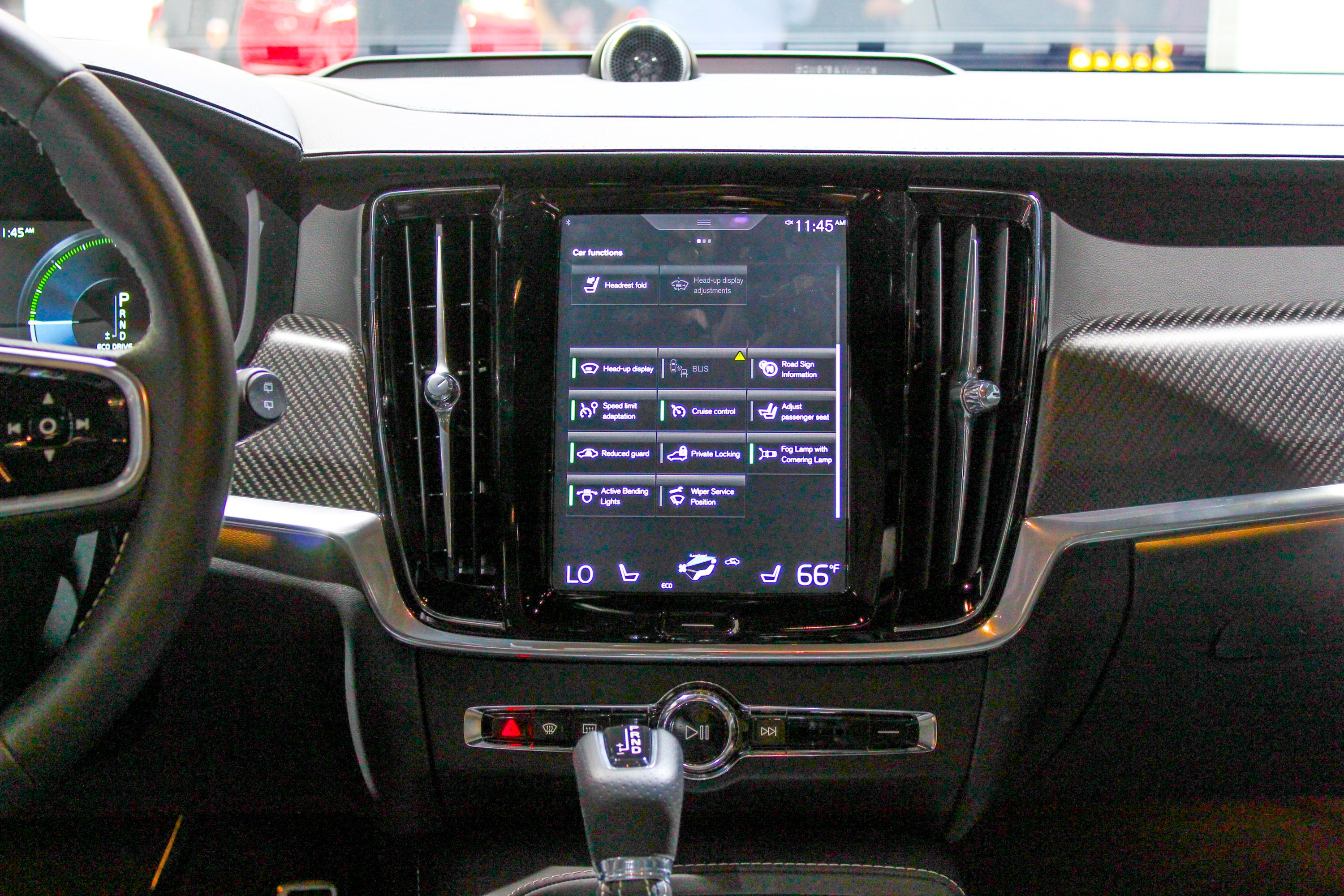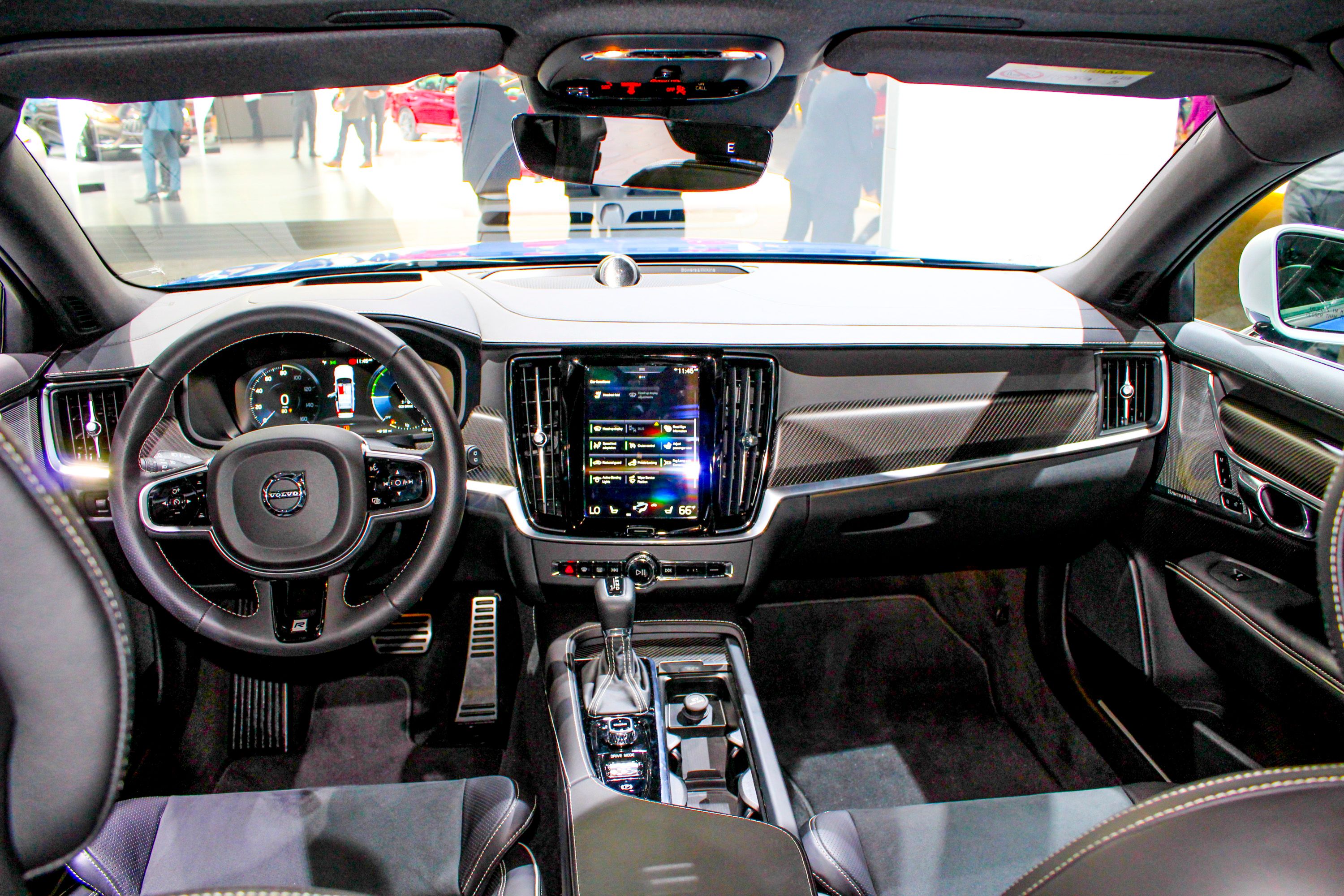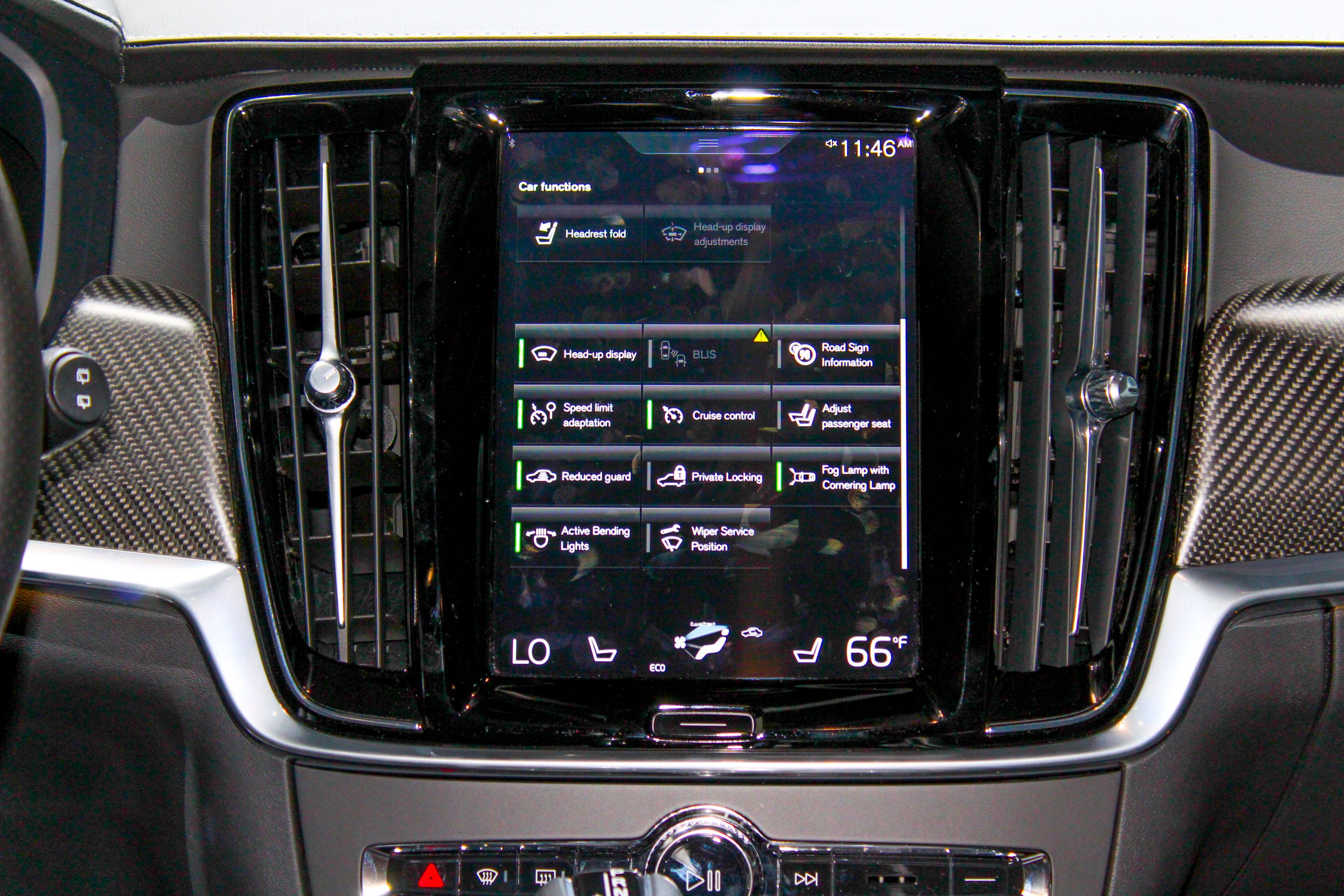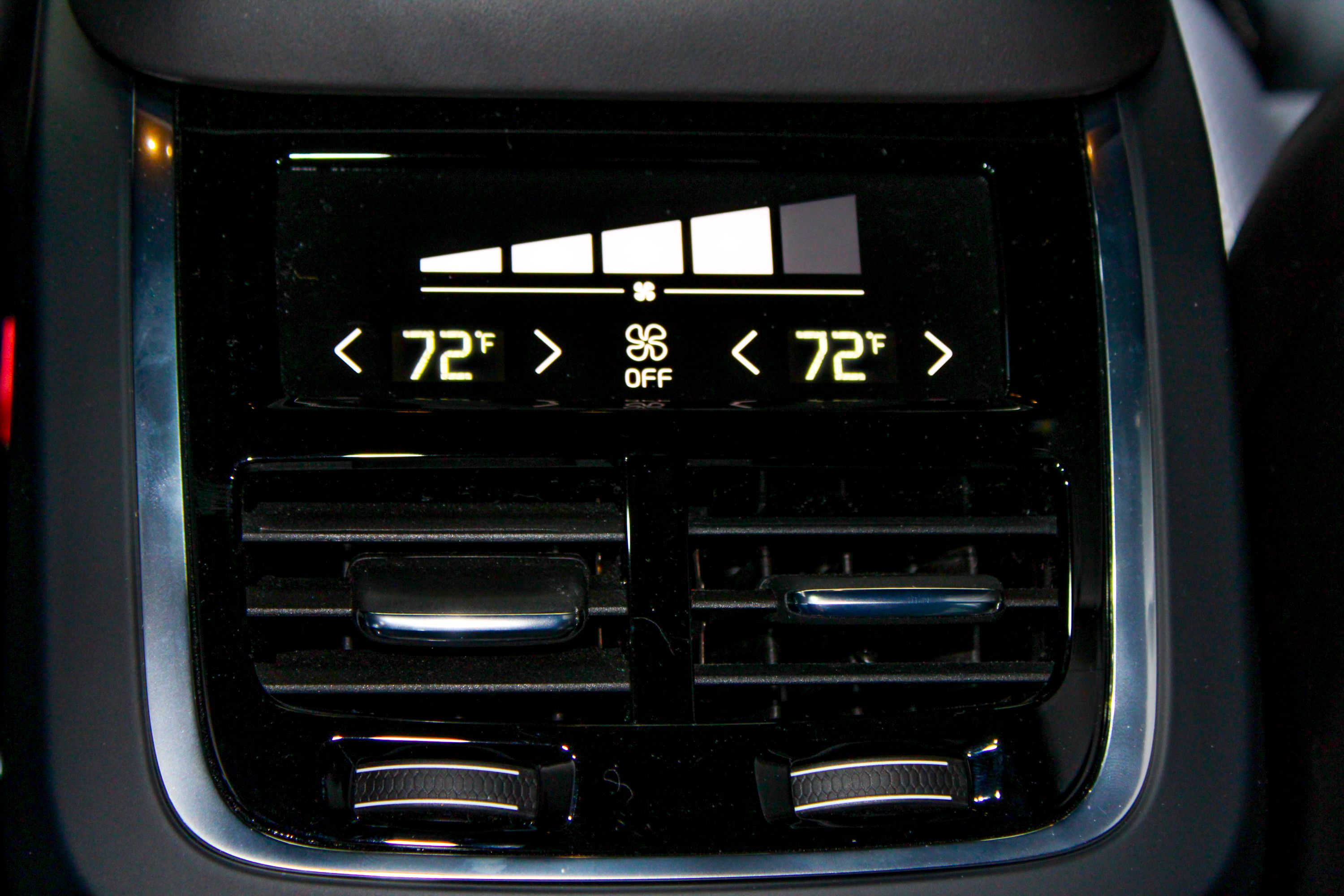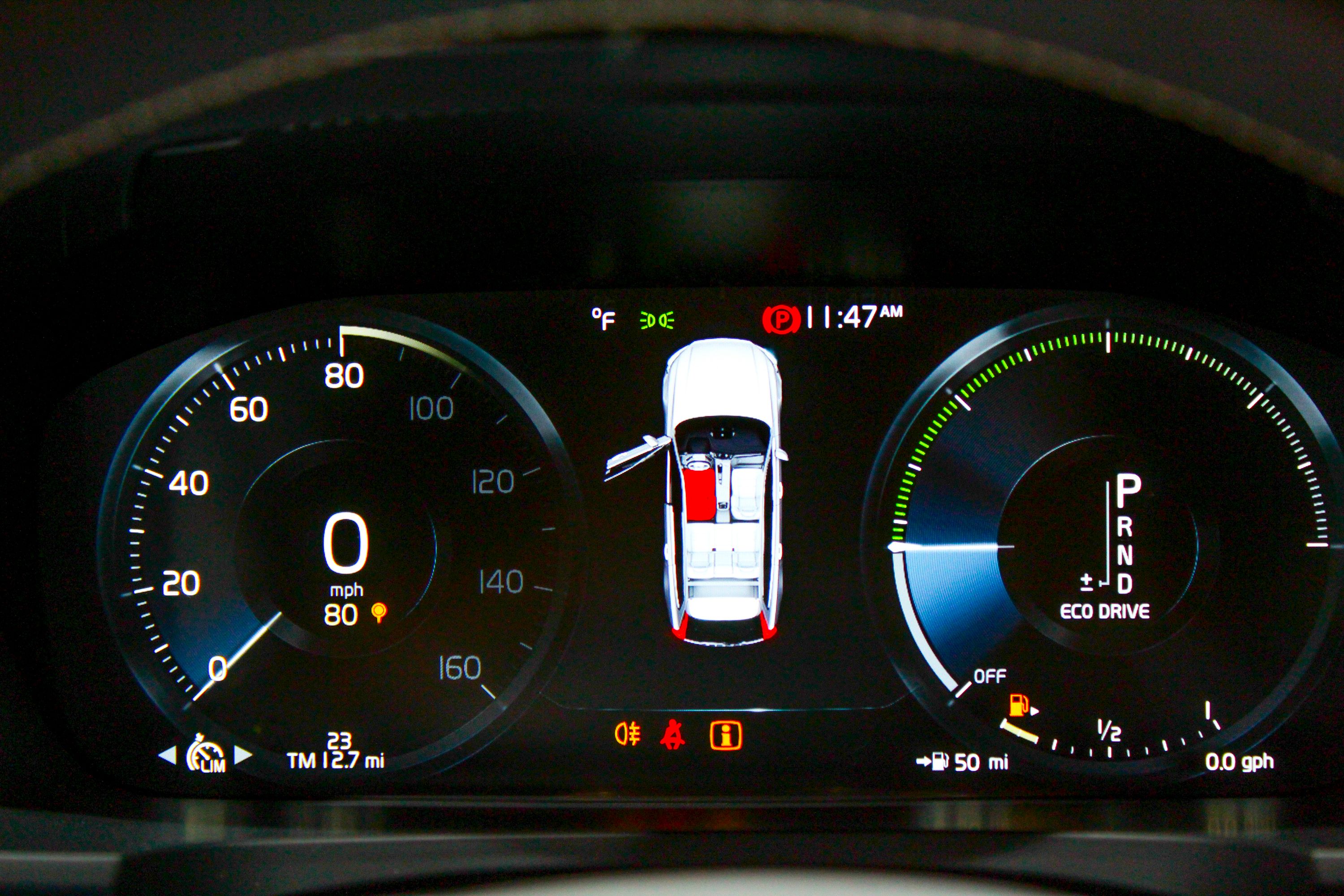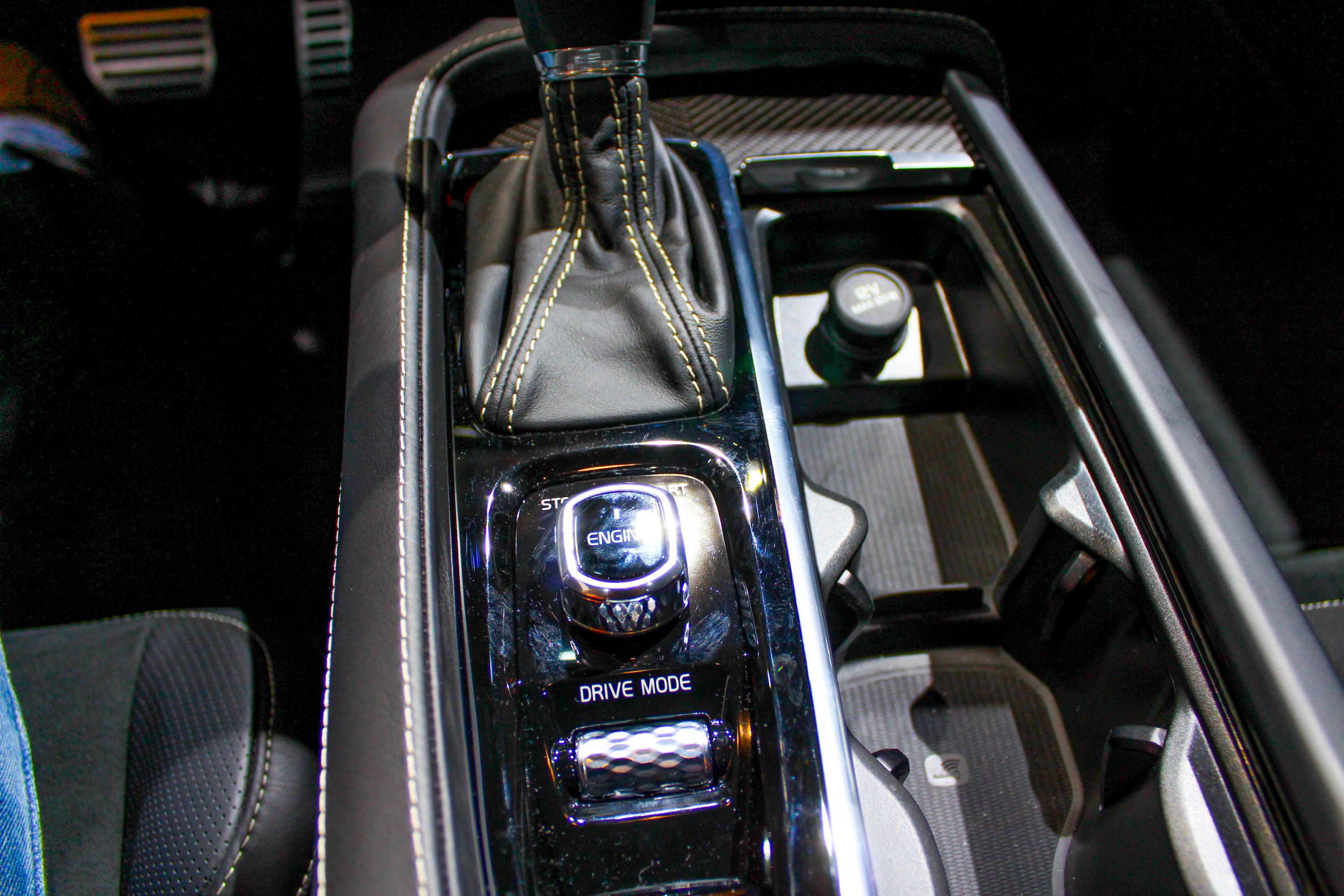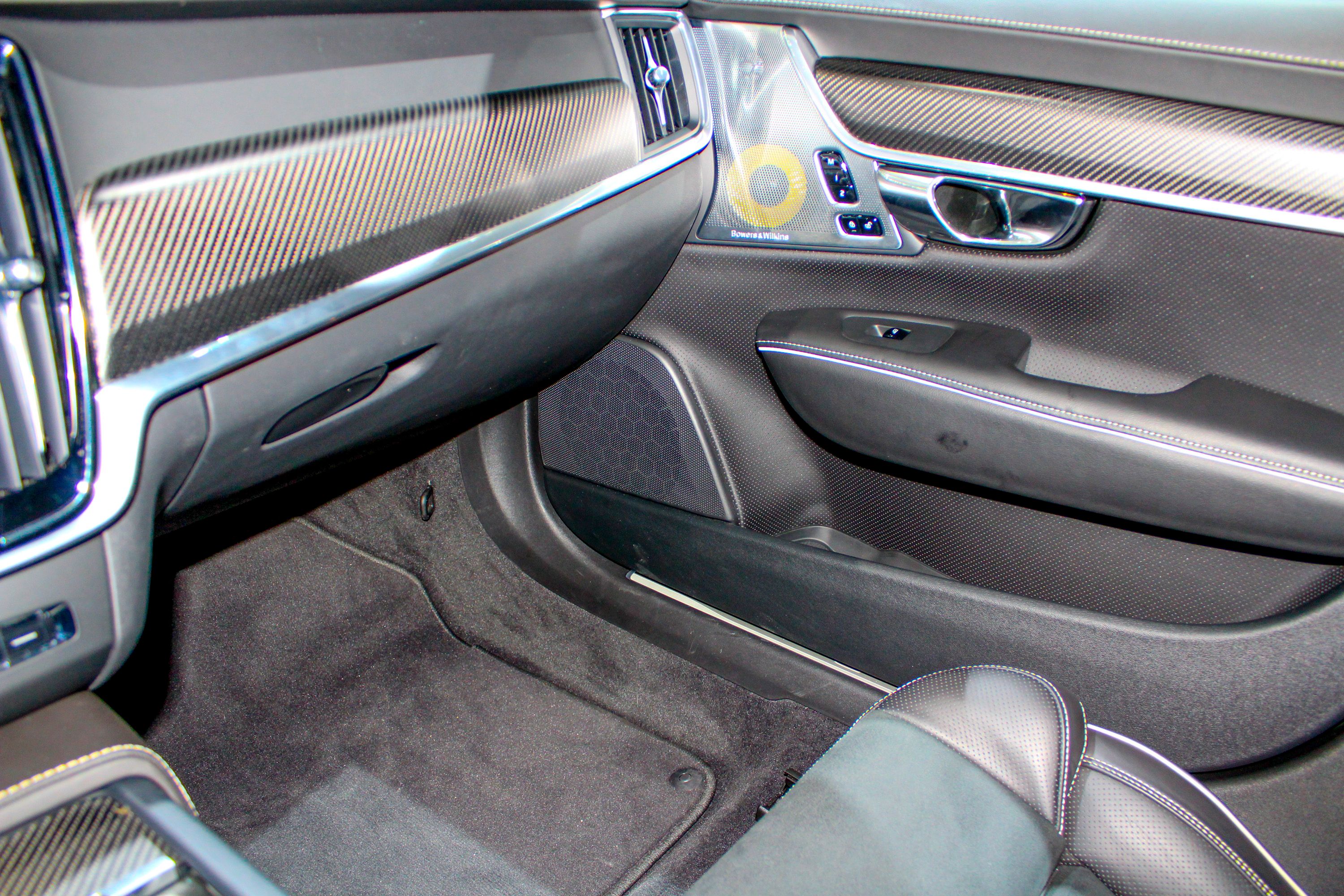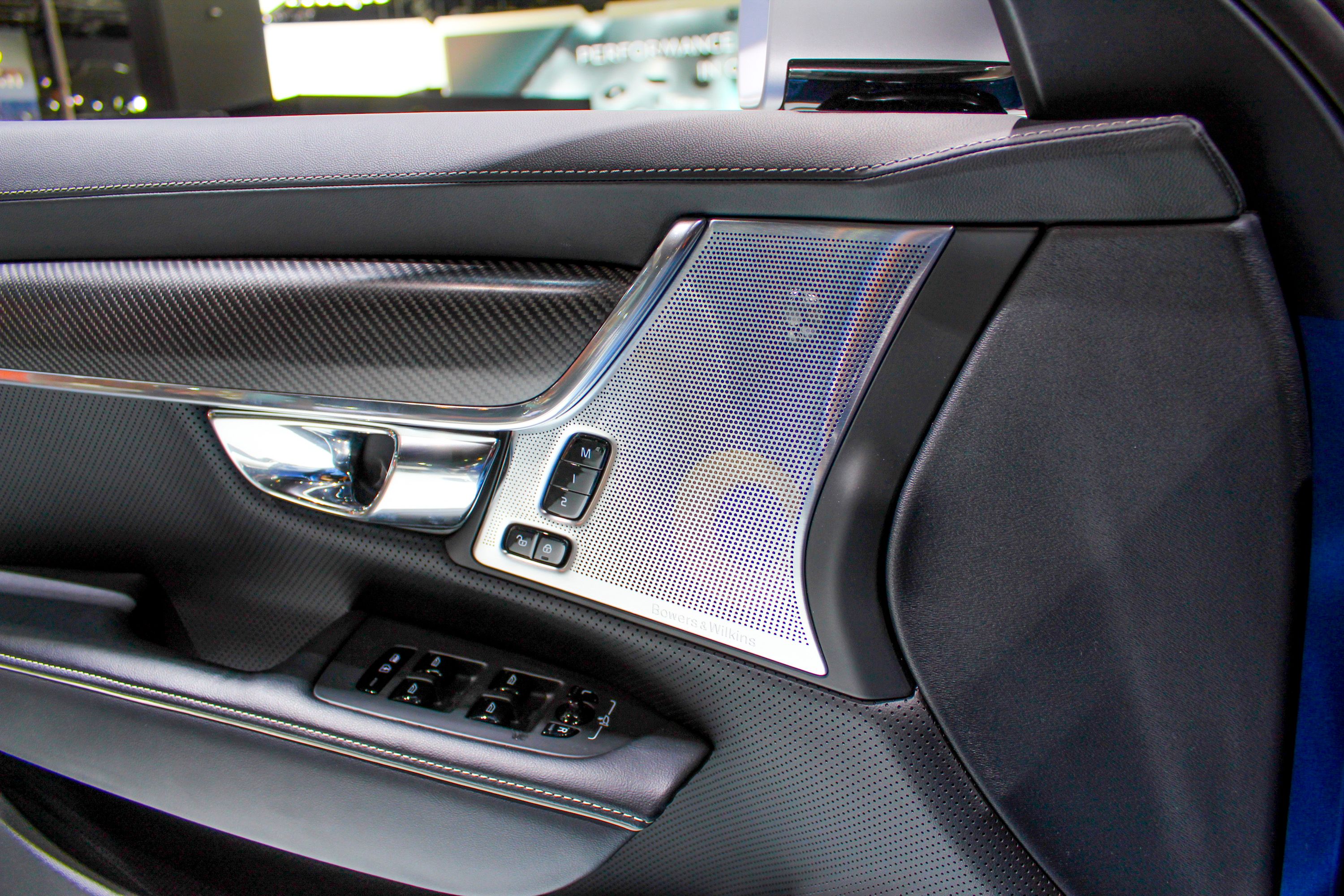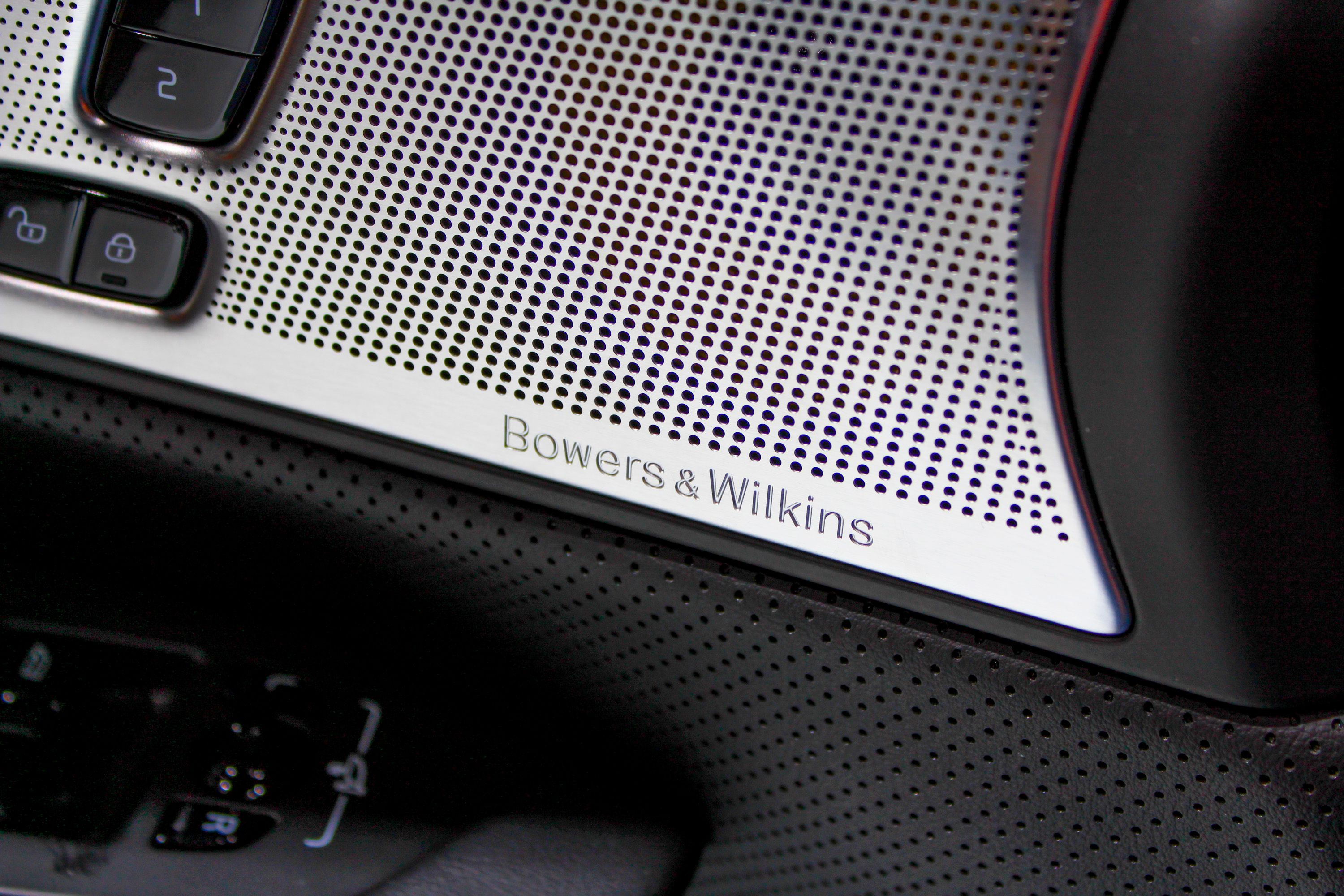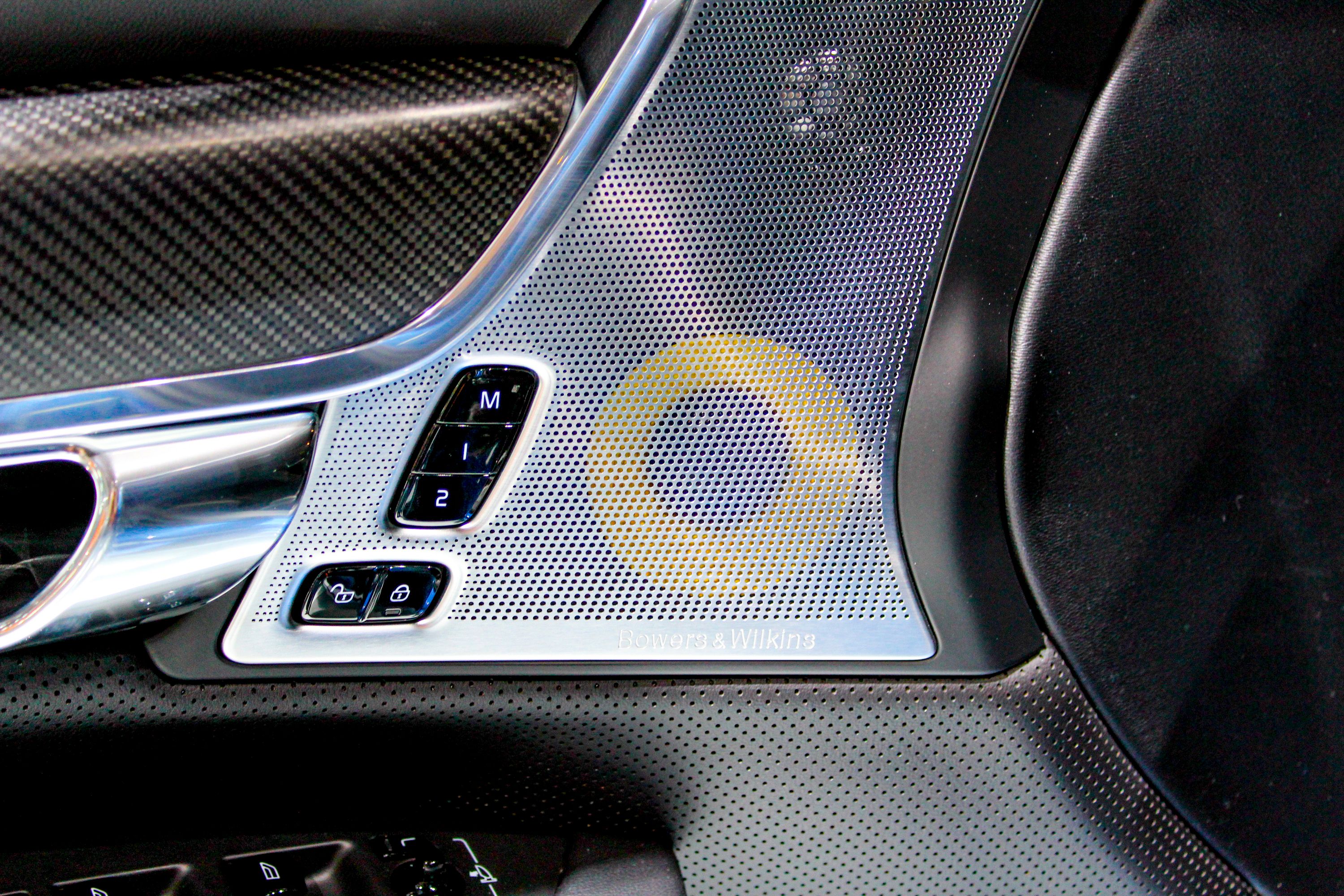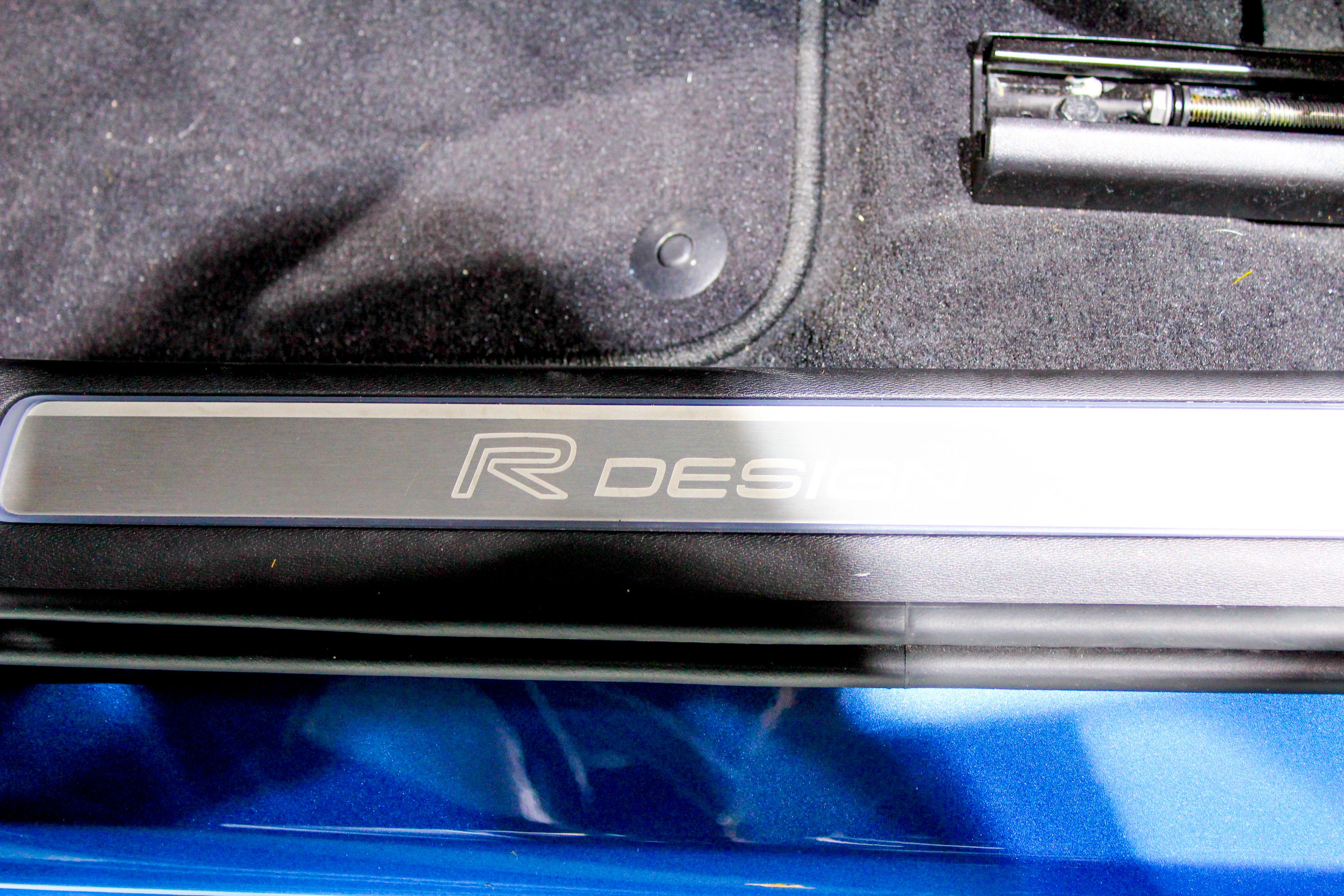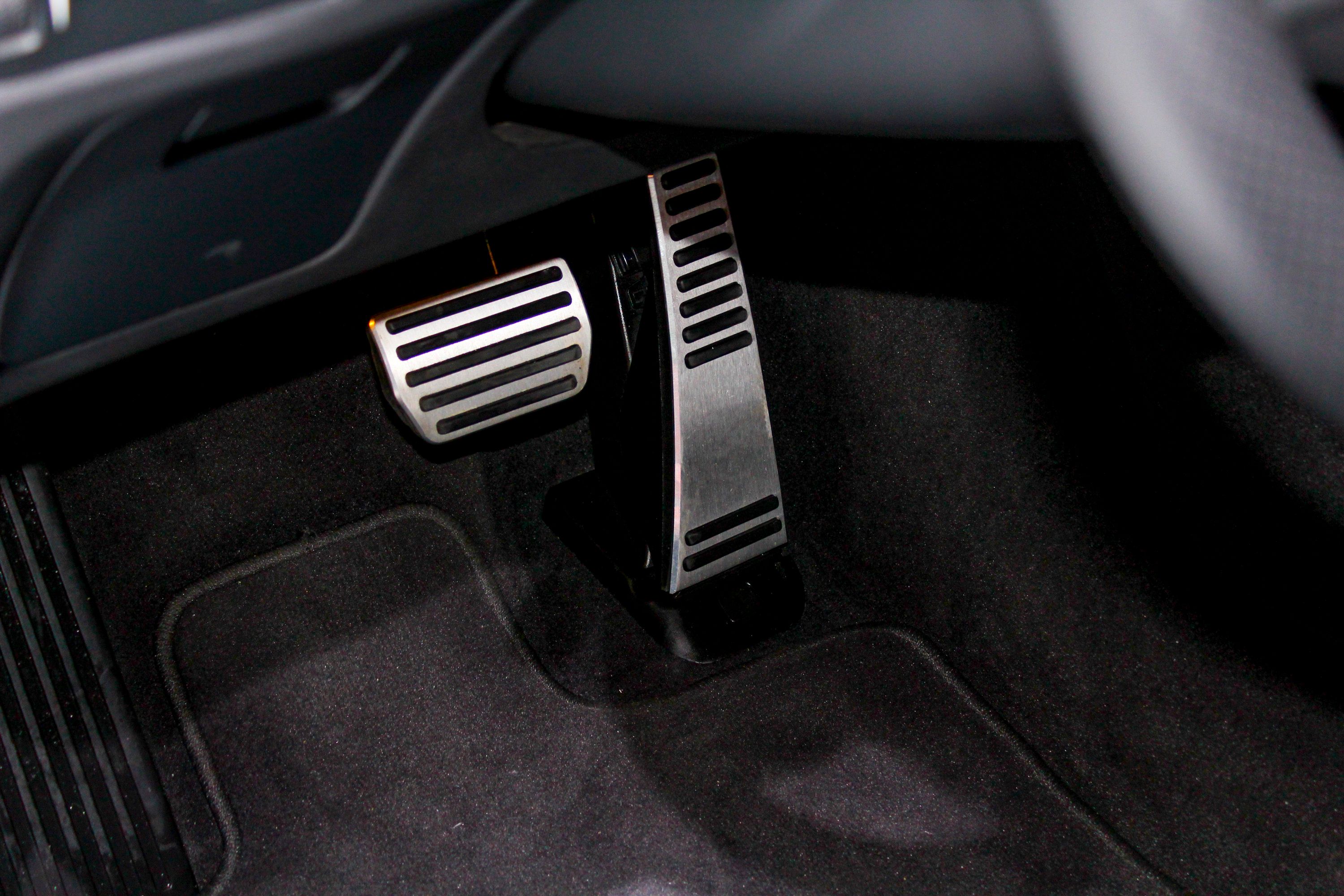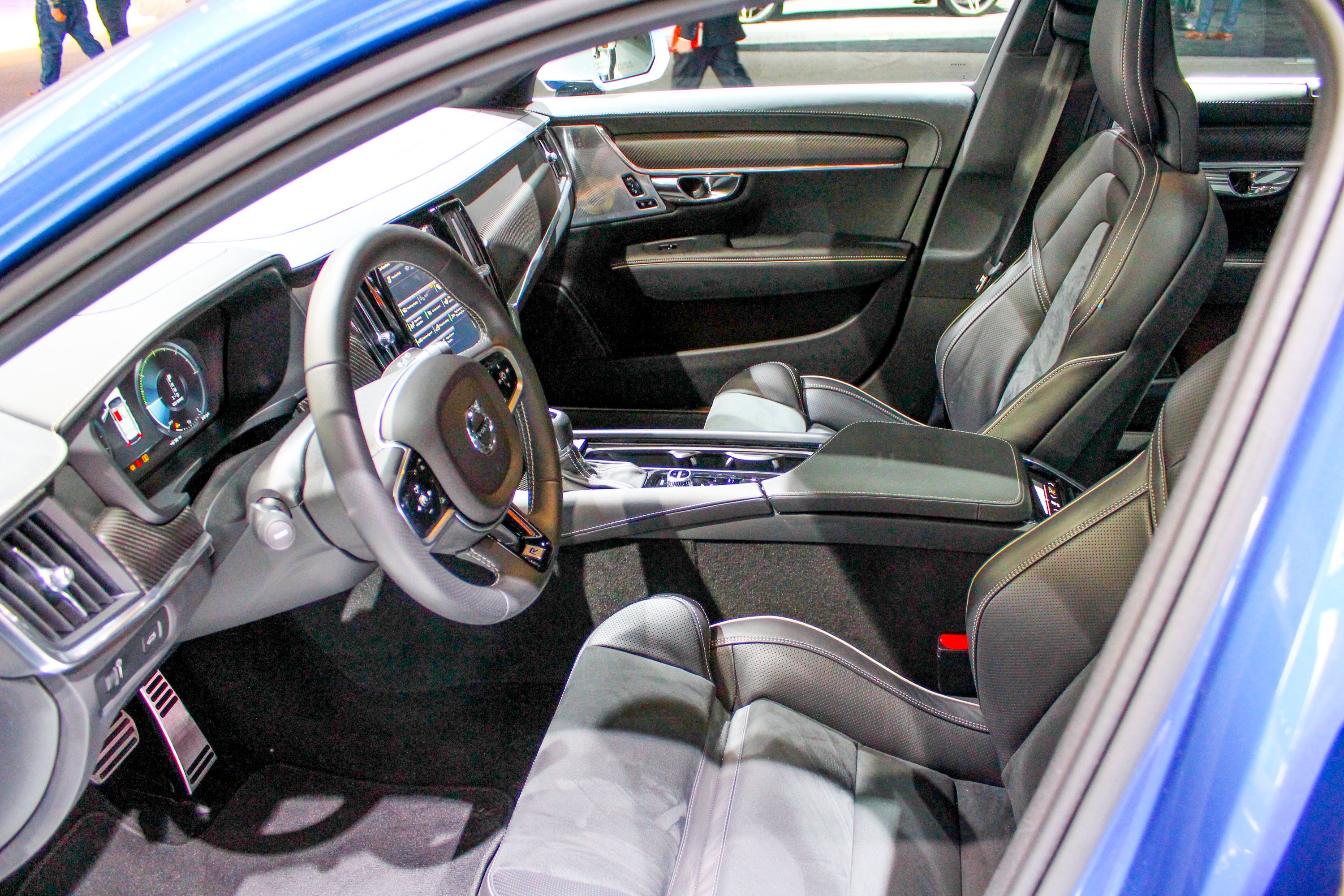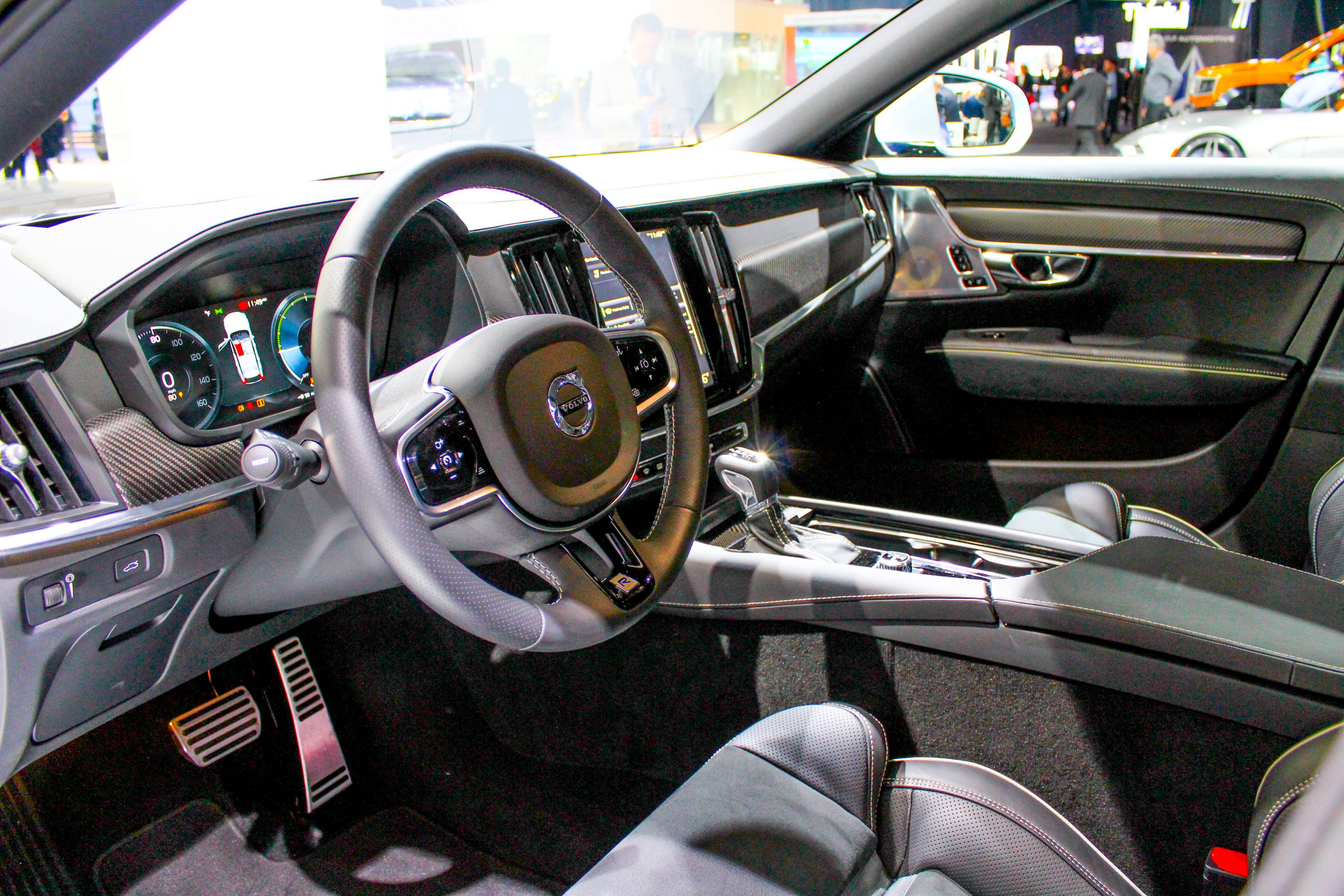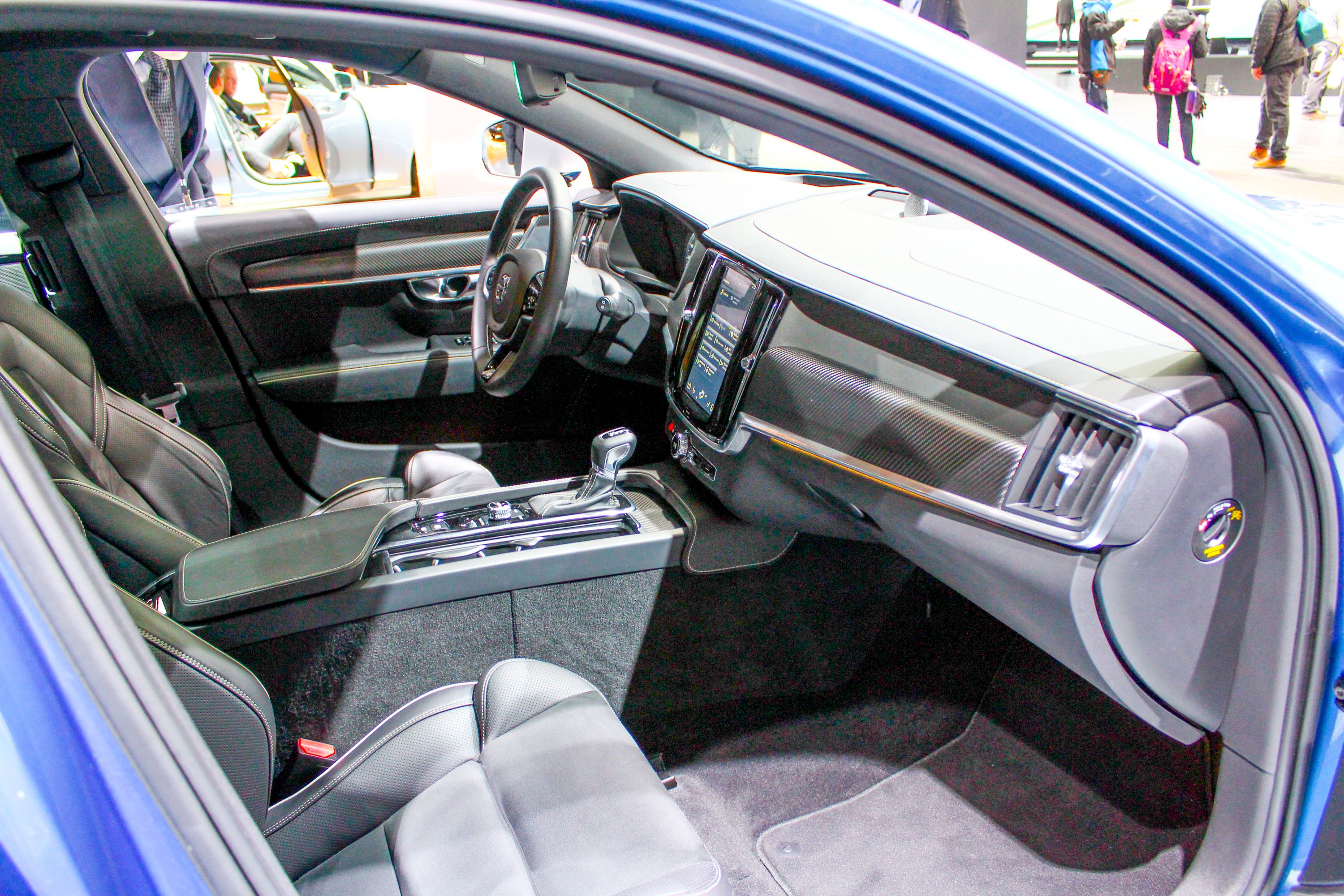It’s only been four short months since the 2017 Volvo V90 made its debut at the 2016 Geneva International Auto Show, and Volvo is already dropping details on its respective R-Design performance model. Under the R-Design name, the V90 gets a little sportier, with a new set of wheels, new front fascia, a new radiator grille, and some new exterior trim elements. Inside, the car gets new pedals and mats to go with new trim inserts and a new steering wheel. According to Volvo, the interior also gets a “high-level interior illumination package that radiates attention to detail.” But although the V90 R-Design is “performance inspired,” no upgrades were made under the hood.
Regardless of the lack of performance specs, the exterior package does give us some things to talk about. It wasn’t that long ago that the word “sporty” and “Volvo” could never be found in the same sentence, but Volvo has upped its game in recent years and is now pushing to compete with the big boys of luxury. And that is oh so evident looking at the R-Design package on the new V90. That might mislead you to believe there is massive change over the standard V90, but don’t be confused, because there really isn’t much. There is, however, just the right mix of aggression and sports appeal – at least for a wagon, anyway.
With that said, let’s take a closer look at the V90 R-Design and go over all the fine details. It may very well be the model that turns your attention back to the all-but-dead station wagon segment.
Continue reading to learn more about the Volvo V90 R-Design.
2017 Volvo V90 R-Design
- Make: Array
- Model: 2017 Volvo V90 R-Design
- [do not use] Vehicle Model: Array
What makes the Volvo V90 R-Design special
In traditional fashion, the R-Design brings mild (but provocative) changes to the exterior of the large estate, but without taking too much away from the overall appearance and stance of the car. Up front, you’ll find a new grille that features horizontal and vertical louvers in a rectangular mesh, as opposed to the standard grille with vertical slats. Each horizontal louver has a number of fins, and crosses the vertical slats at a 90-degree angle across the the grille. Down below, the lower fascia was replaced by a more aggressive and chiseled unit, with sharp protrusions on each side of the air dam that create a central lip extending several inches ahead of the fascia. As such, the corner air inlets are now completely separate units and feature integrated fog lamps. The grille, air dam, and air inlets all get a glossy black finish that adds a bit of dramatic flair, increasing the overall appeal of the front end.
The new, diamond cut, five-spoke wheels pull together the otherwise unaltered side profile. The wheels have a twisted look to them, almost like the center hub of the wheel was heated up and torqued just a little to give them more character. The spokes and large areas between the spokes are outlined in a silver finish, while the inside of the wheel and the sides of the spokes are finished in the same gloss black as the new trim elements up front. That rounds out the changes to the side, but that’s okay, as Volvo already provided the V90 with an intriguing and engaging side profile.
The rear end also brings very little change with the R-Design nomenclature, with the only change being the gloss black insert between the slanted rectangular exhaust outlets. This insert, as you probably noticed, matches the rest of the black elements that came as part of the R-Design package. It should also be noted that the specific model pictured here features a large sunroof panel, which really does make the interior feel much larger for those riding in the rear seat.
All told, the exterior additions are somewhat minor, and are practically on par with what we’ve come to expect from all manufacturers these days. I tend to criticize manufacturers for taking this stance, as opposed to going all out on a model, but sometimes, less really is more, and the whole R-Design package for the V90 Estate is a perfect fit. Some smoked out taillights, a new rear fascia, or even a diffuser-like element wouldn’t have hurt, but outside of that, I tip my hat to Volvo on this one.
The new sporty and contoured seats are probably the biggest highlight of the interior. Well, either those, or the upgraded steering wheel. Before you take too much of that to heart, let me explain a little. The steering wheel in the V90 R-Design is all black with white contrast stitching. It's still a three-spoke design, and features the same layout for the side spokes, outlined in silver trim. The lower spoke, however, is now open in the center, with a black insert that sports the “R” badge. The seats are also black leather with white contrast stitching. The seats don’t appear to be perforated like those on some of the higher trims of the standard V90, but the side bolsters are now elevated and extend on the seat back to provide better support should you try to get frisky with the Estate.
The interior also features a new set of pedals and black floor mats with white contrast stitching around the edges. Volvo also claims there is a “high-level interior illumination package.” This package, however, doesn’t appear to be exposed in any of the images we have here. The only change to illumination I can see is the red coloration on the instrument cluster, as opposed to the blue indicators on the standard model. Perhaps that's what Volvo is talking about, but hopefully, it went far enough to add some cool ambient lighting to the door storage pockets or under the dash. The final detail that deserves attention inside is the new trim inserts throughout. Volvo got rid of those wood inserts and replaced them with some very artistic and inspiring carbon fiber inserts, and they simply work with the black interior. Not bad.
The car is built on the same underpinnings as the S90 and XC90, so we know there's the potential for the turbocharged, 254-horsepower T5, or the 316-horsepower T6. In Europe, the model will probably be available with the 190-horsepower D4 diesel, or the 225-horsepower D5 diesel. But since the V90 R-Design is “Performance Inspired,” I wouldn’t be surprised if the T8 hybrid is Volvo’s engine of choice. That engine combines a 2.0-liter turbocharged and supercharged gasoline mill with an 80-horsepower electric motor. It's the most powerful engine Volvo has on offer for the V90, delivering a total output of 400 horsepower and 472 pound-feet of torque. That’s right - this could very well be a 400-horsepower Volvo.
Volvo V90
The Volvo V90 Estate first saw the light of day in 1998, but by the turn of the century, Volvo had to take it off the market. Maybe the world just wasn’t ready for the V90, or maybe Volvo wasn’t ready to boast such a car, but 16 years later, the brand dropped an all-new V90 Estate at the 2016 Geneva Auto Show. It's supported by Volvo’s new Scaleable Production Architecture platform, and boasts two different gasoline mills delivering 254 horsepower and 316 horsepower. There's also the T8 hybrid that pumps out 400 ponies and, in Europe, there are two diesel mills that deliver 190 horses or 225 ponies. The new V90 Estate starts out at £34,555 in the U.K., which translates to nearly $50,700 at current exchange rates (06/22/2016). Pricing increases across the line, with the range-topping D5 AWD trim commanding £44,055, or roughly $64,600. Pricing in the U.S. has yet to be released, but we expect the S90 to start around $46,000, which would position the V90 Estate in the starting range of about $50,000 – increasing to more like $70,000 for the range-topping model.
Read our full review on the Volvo V90 here.

